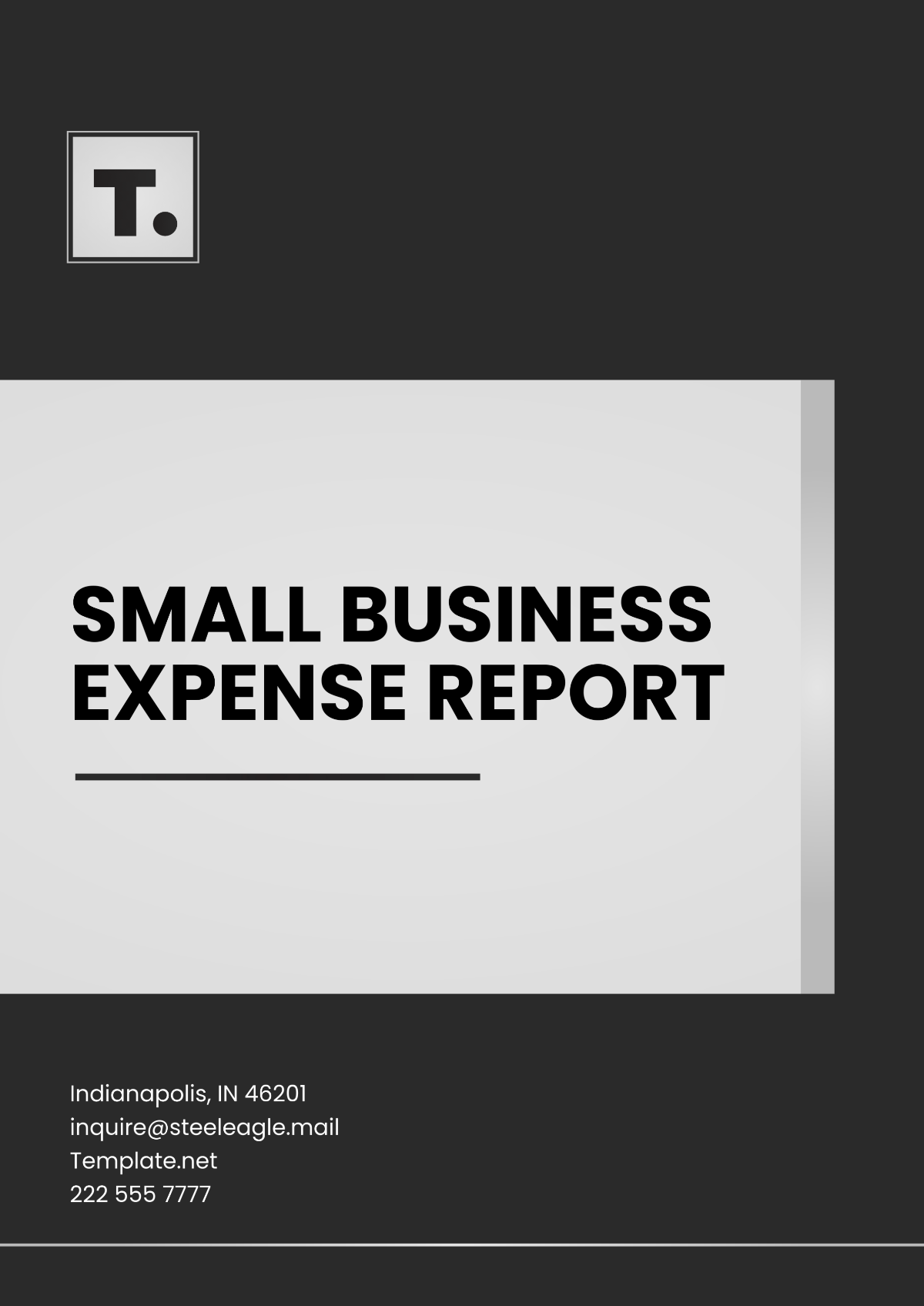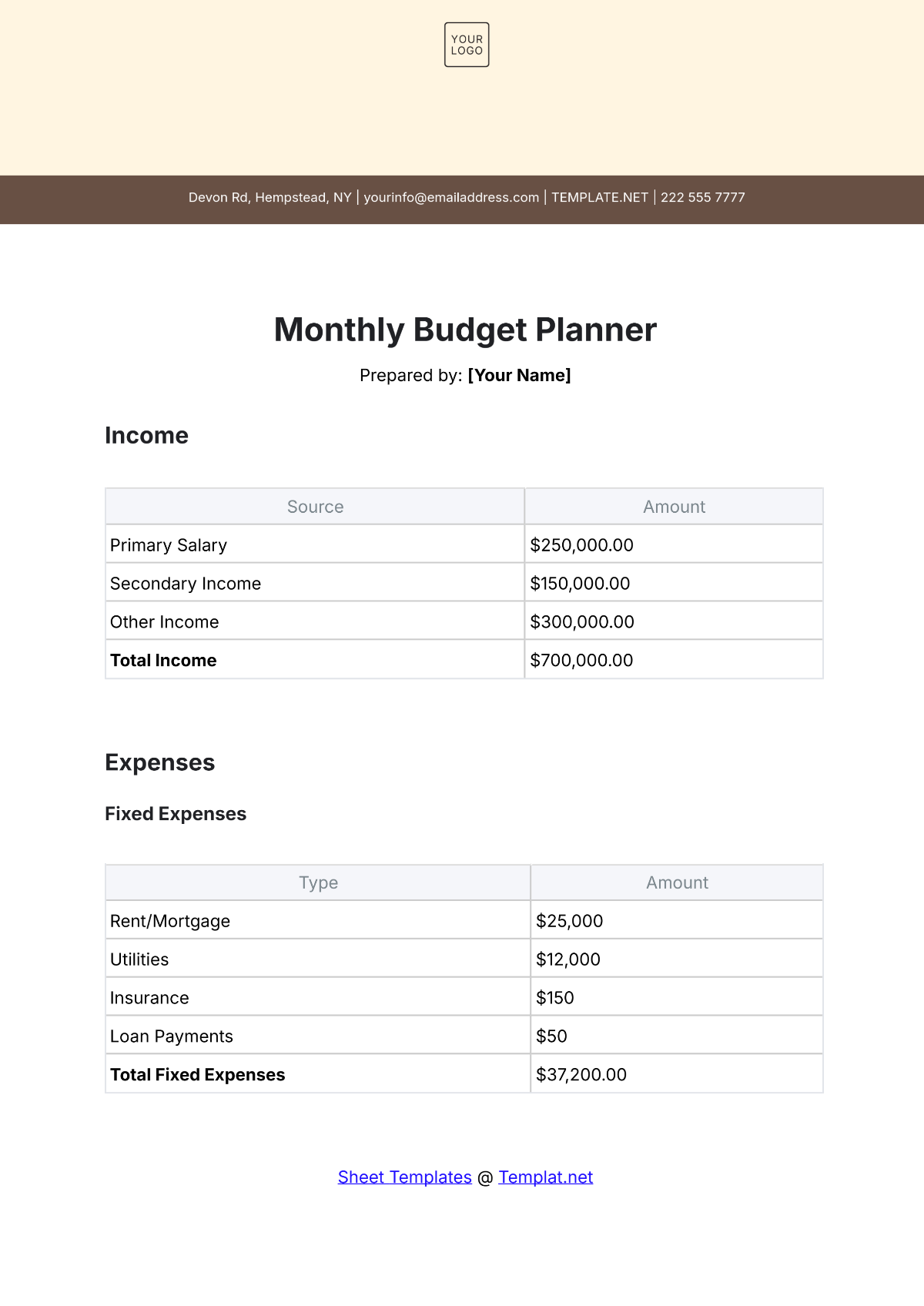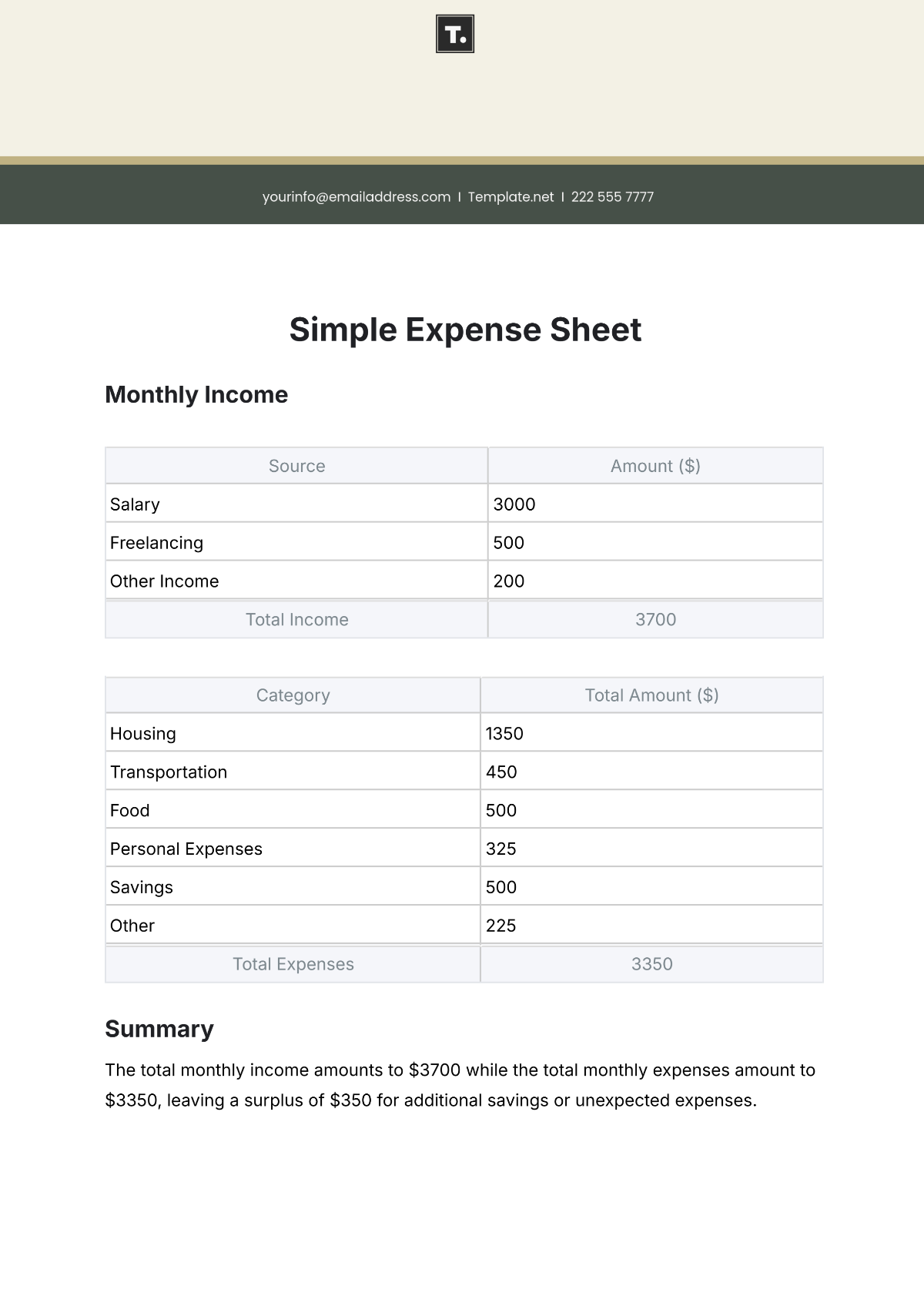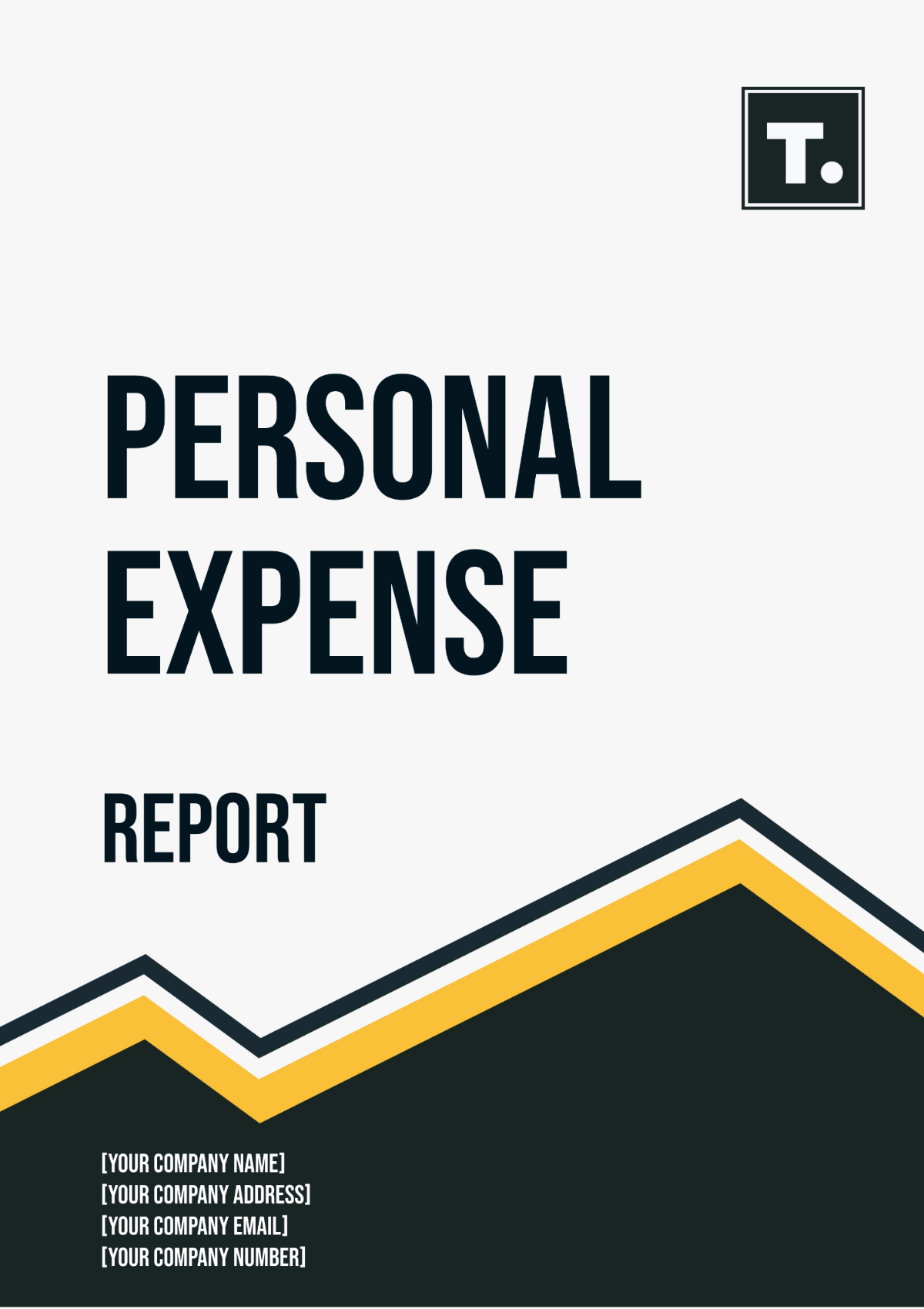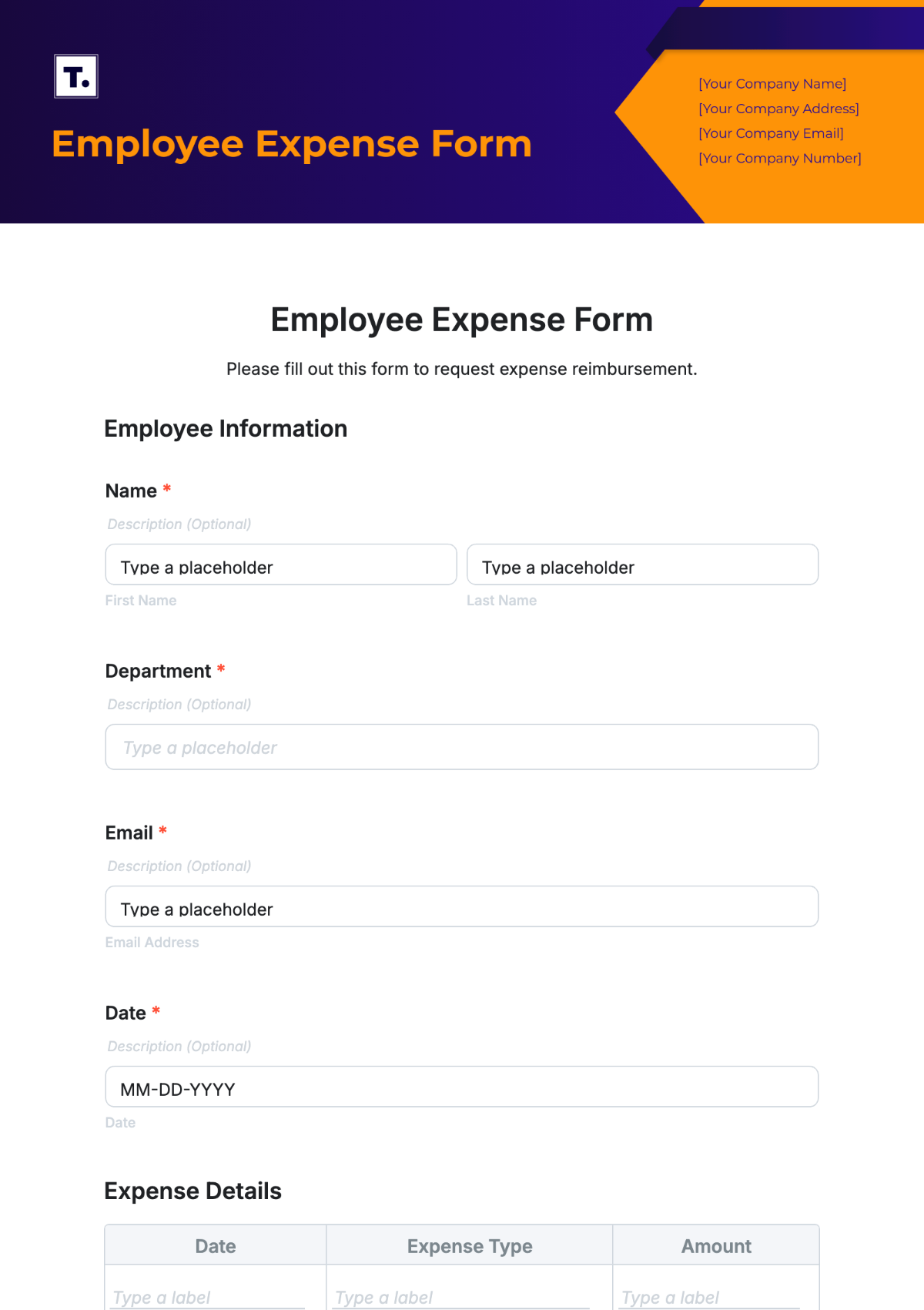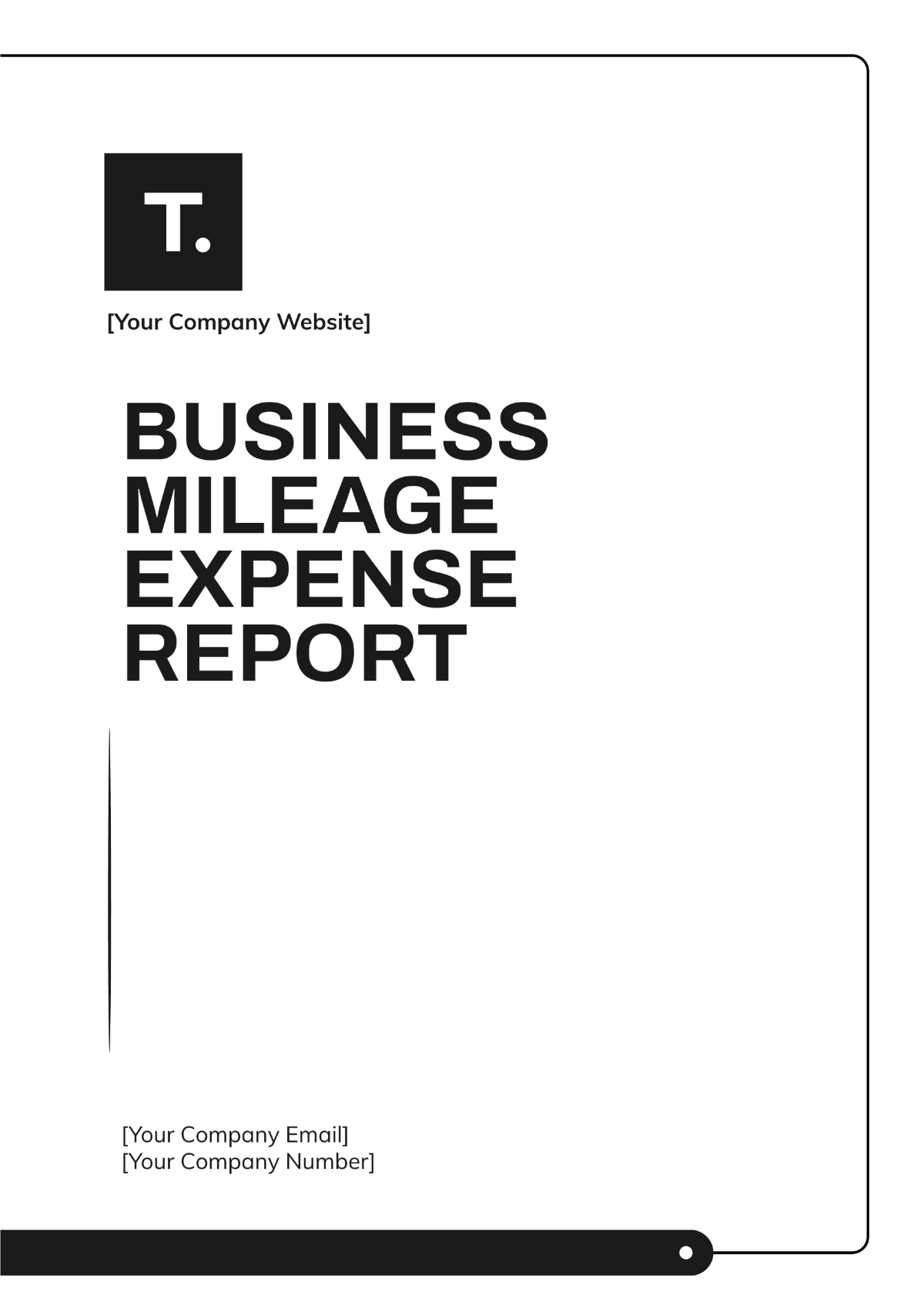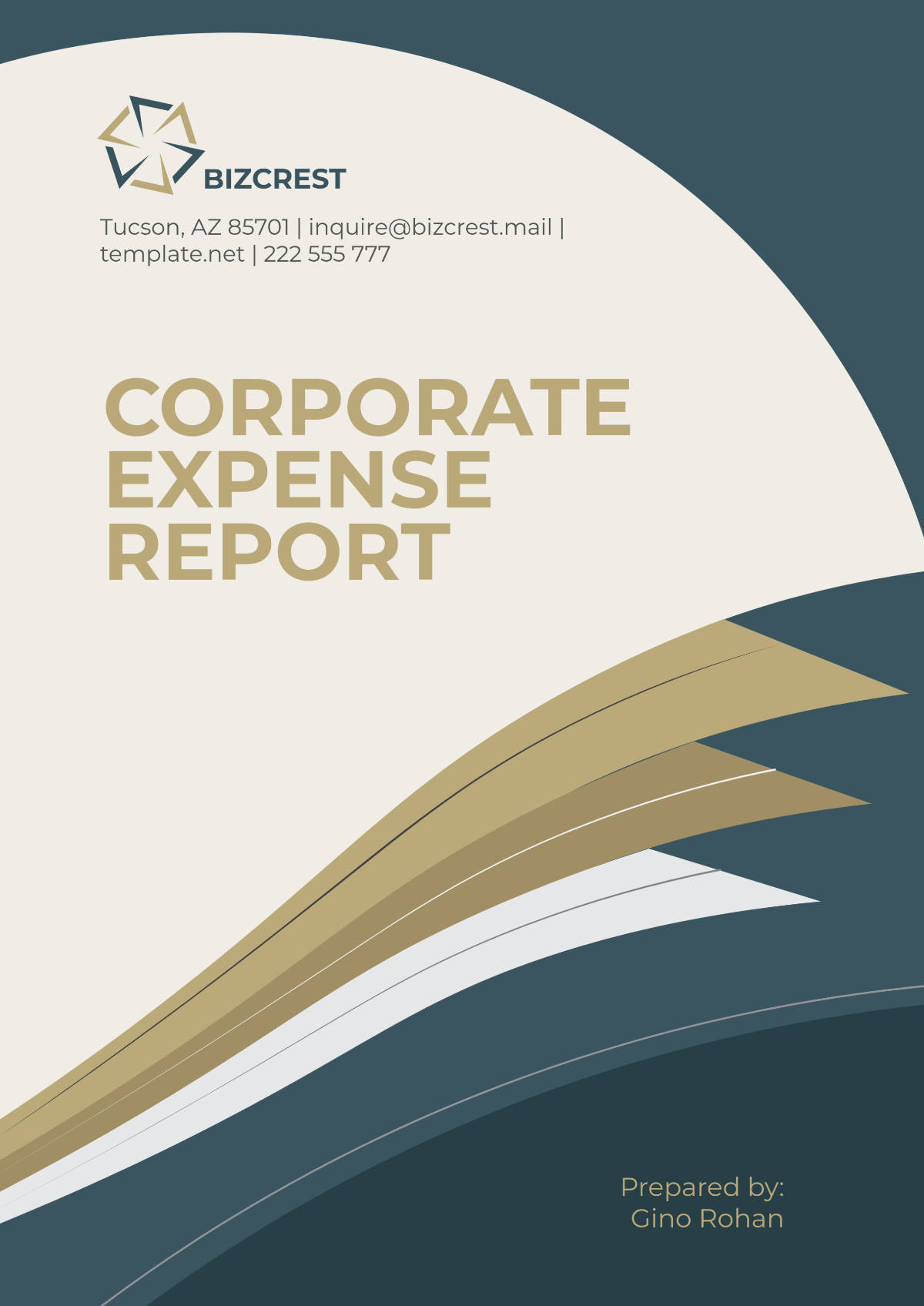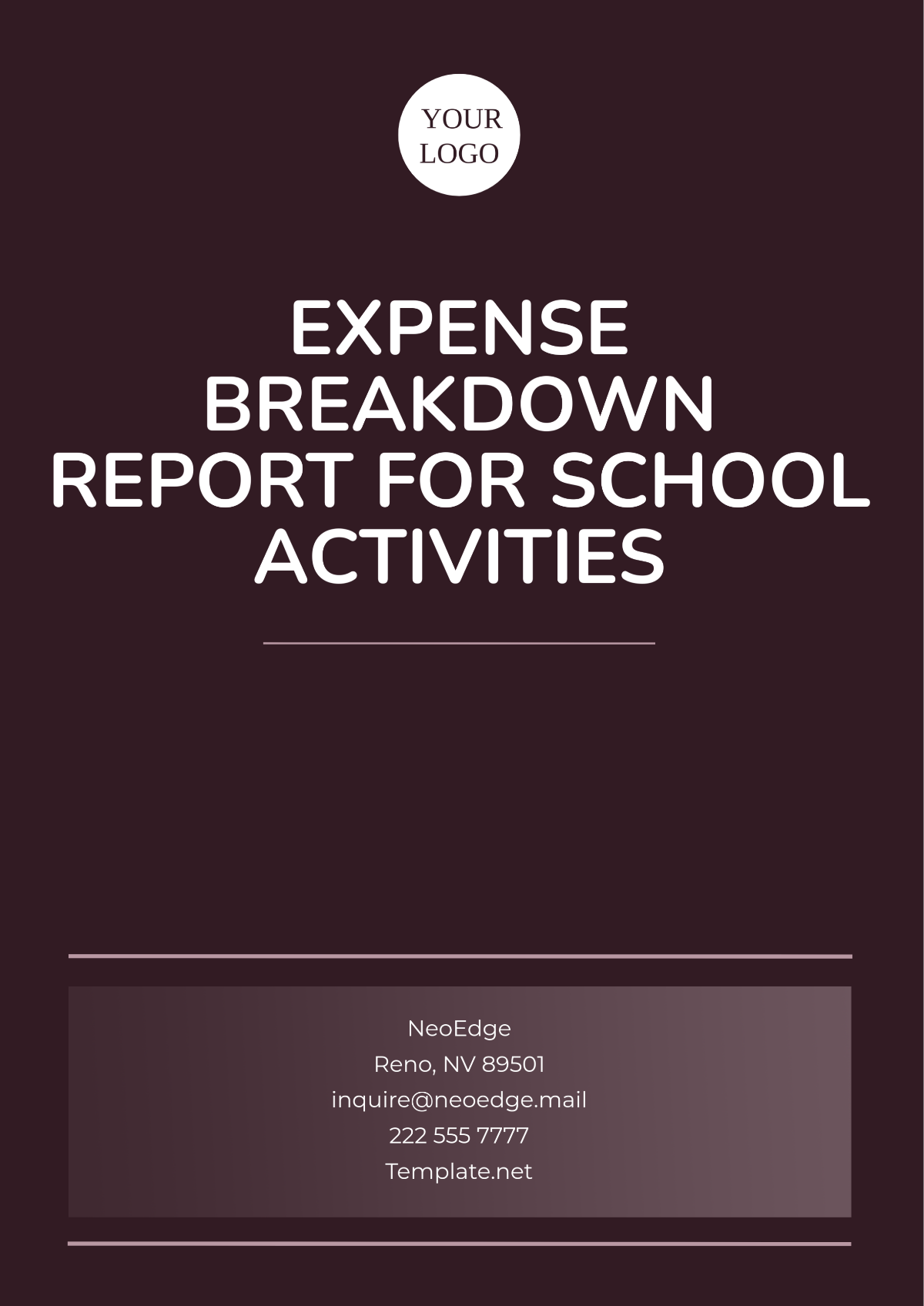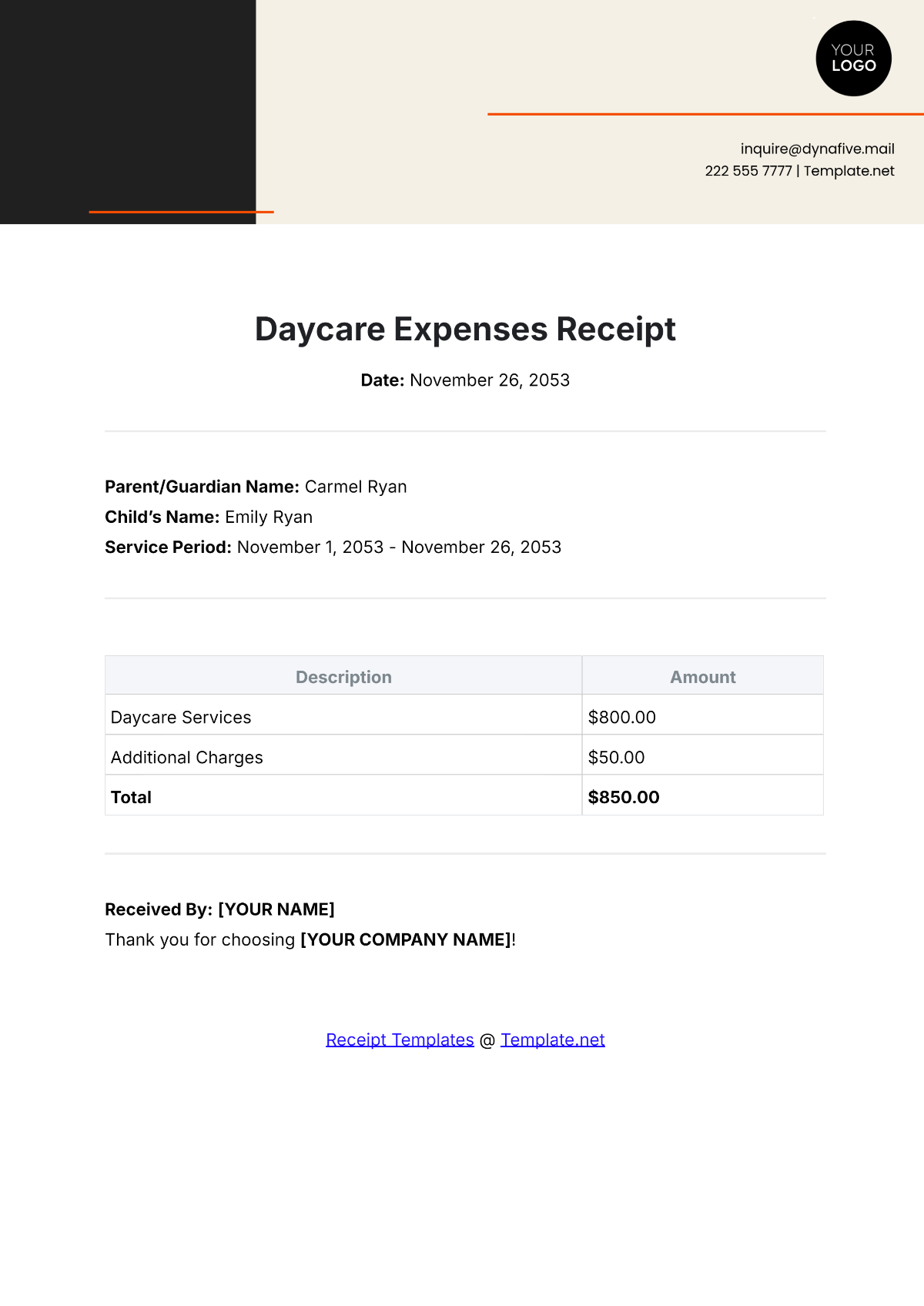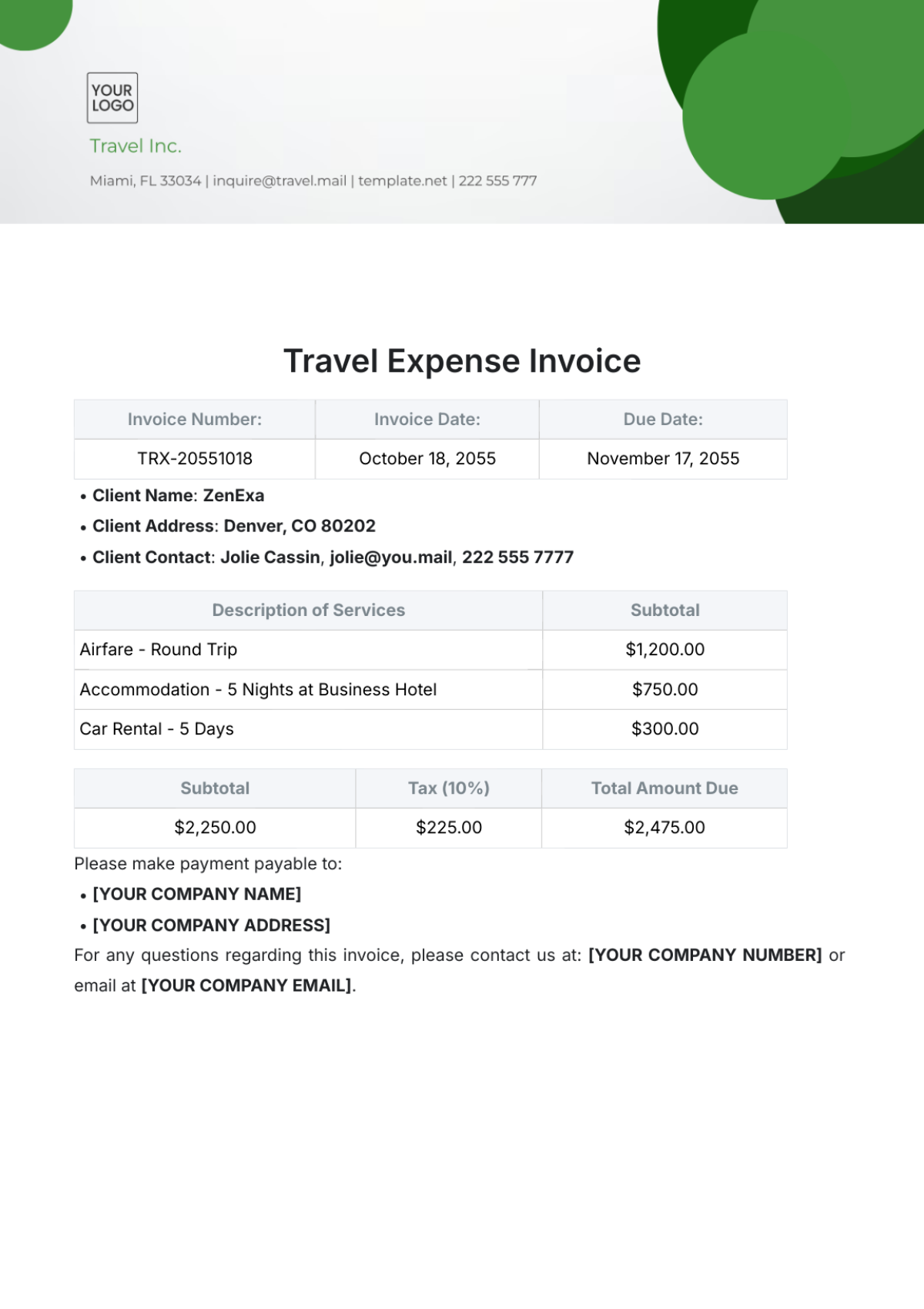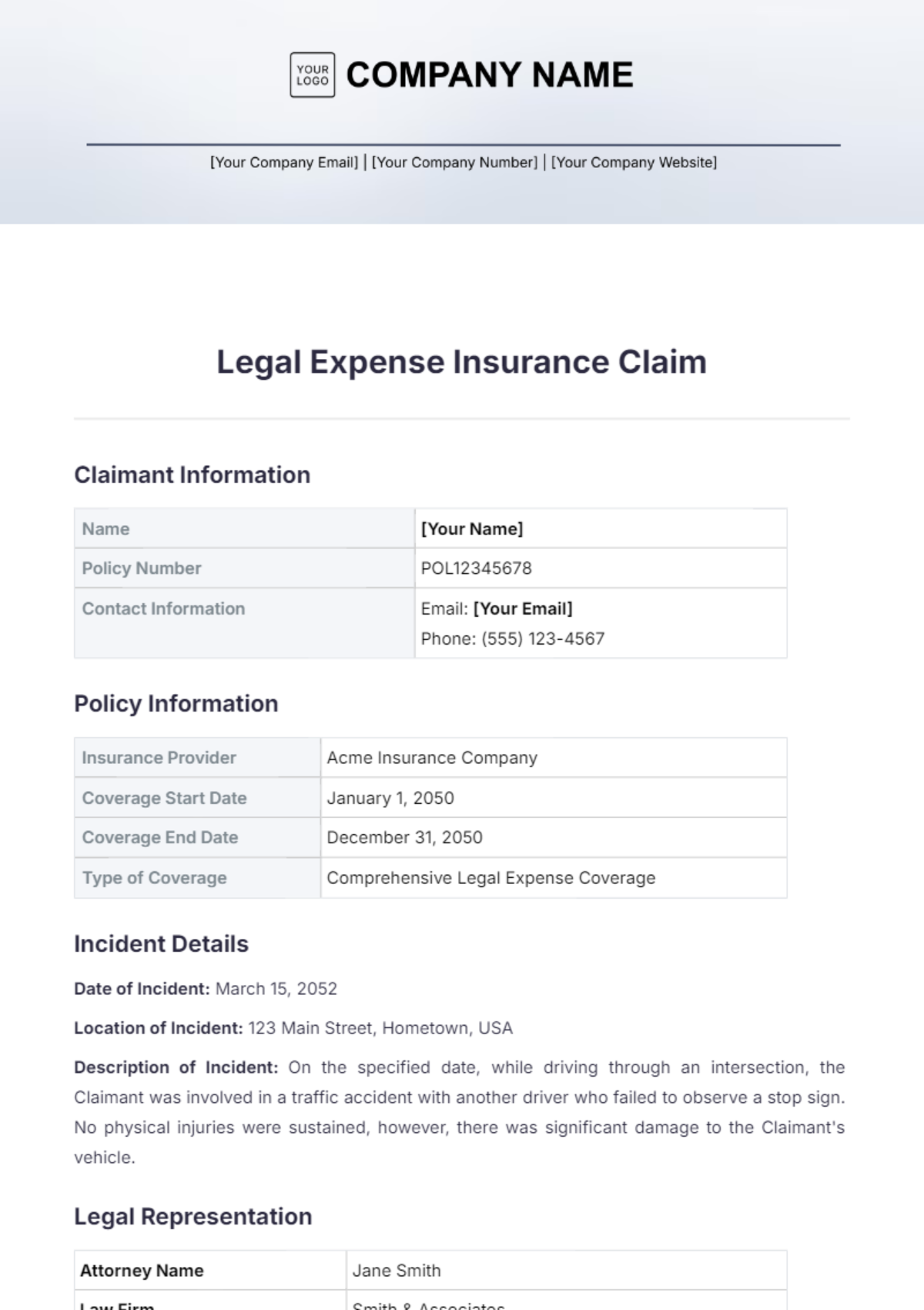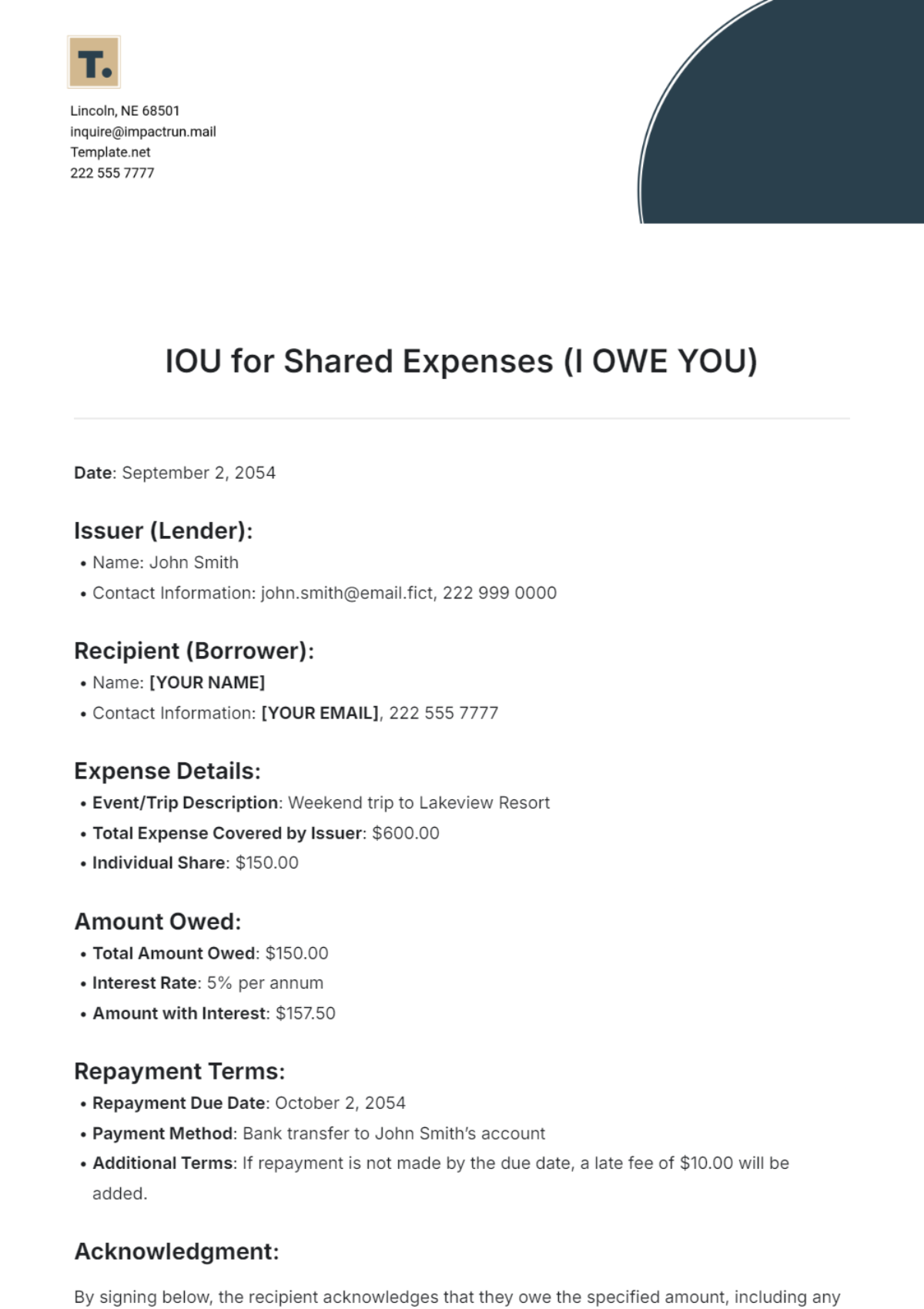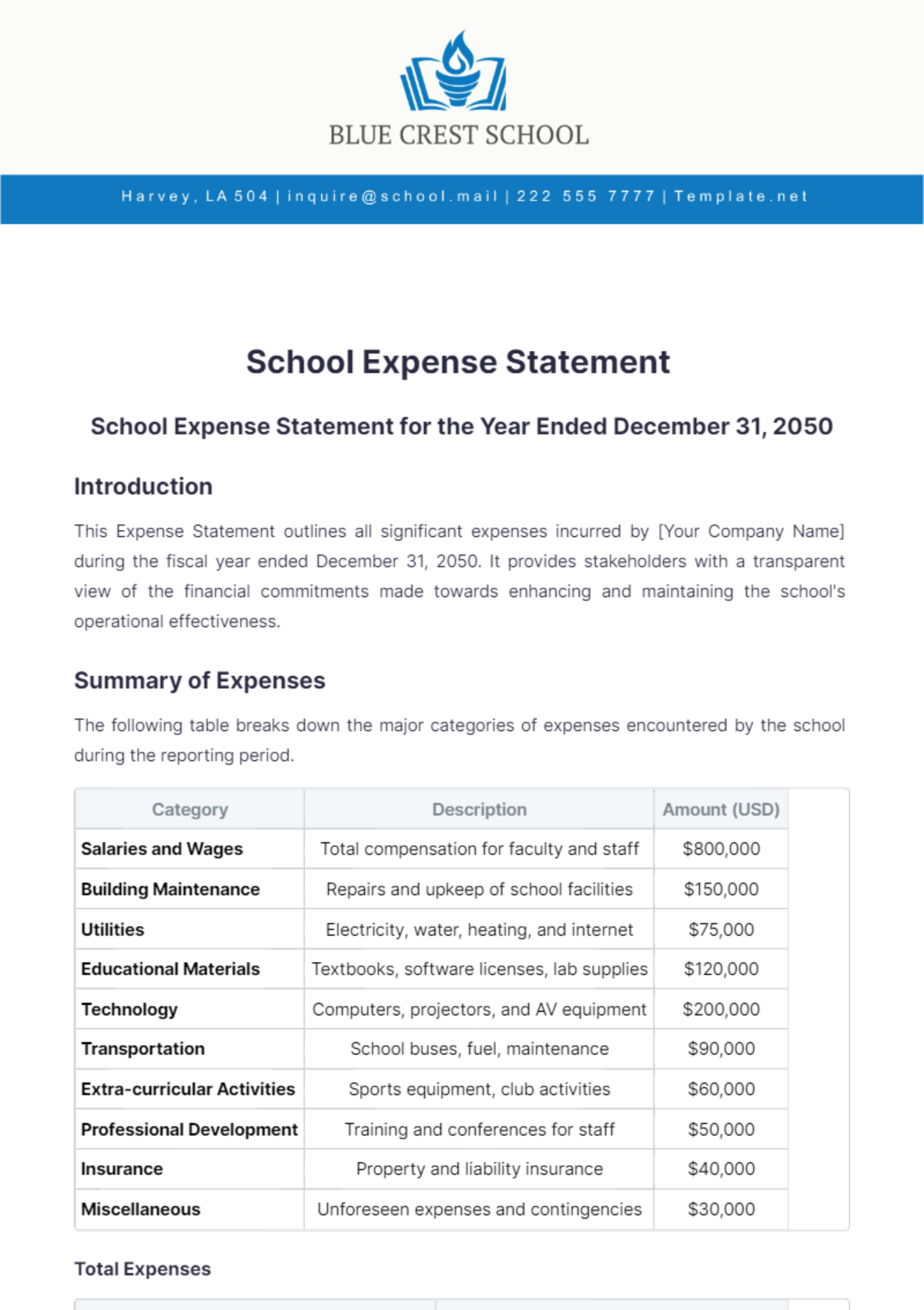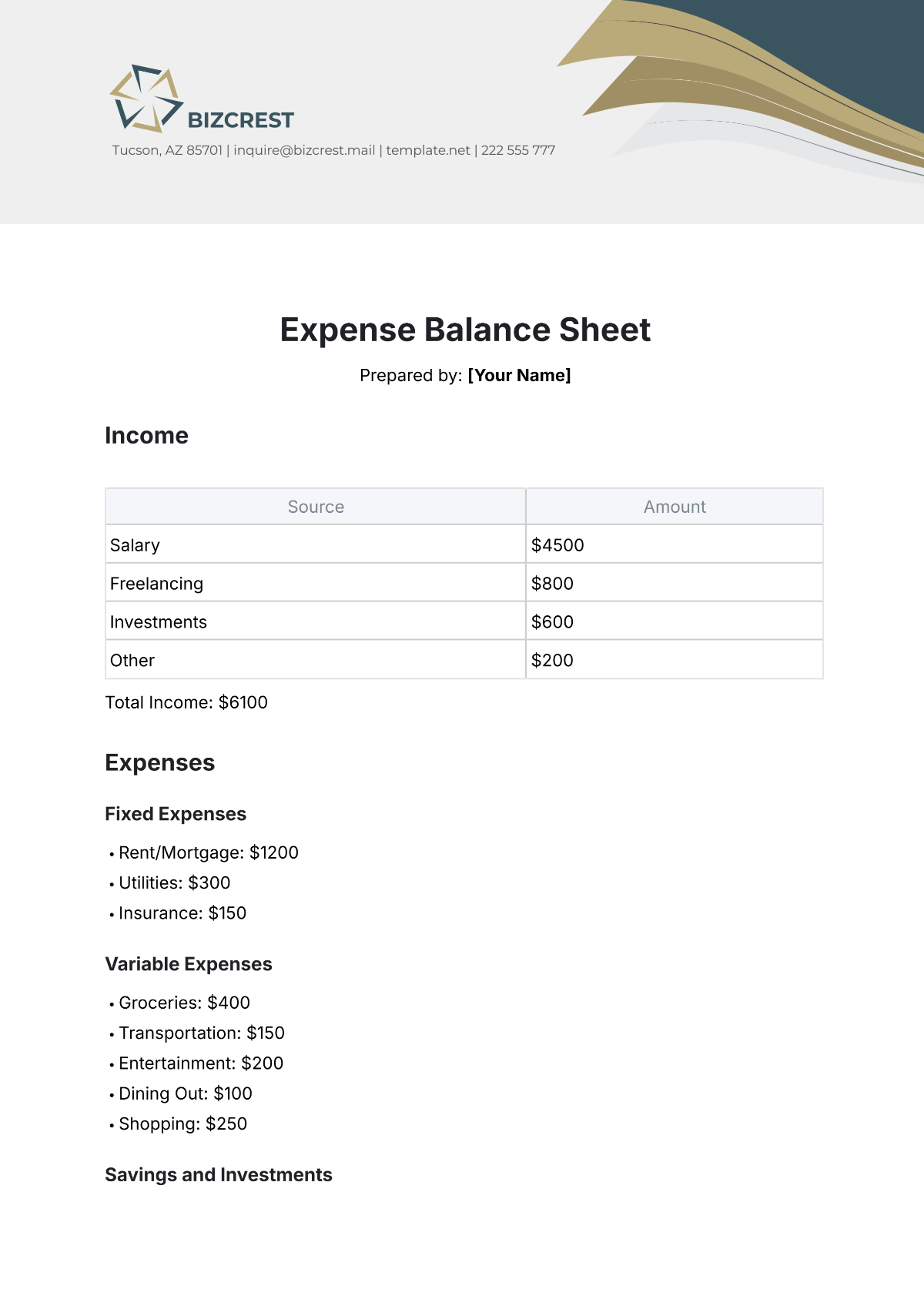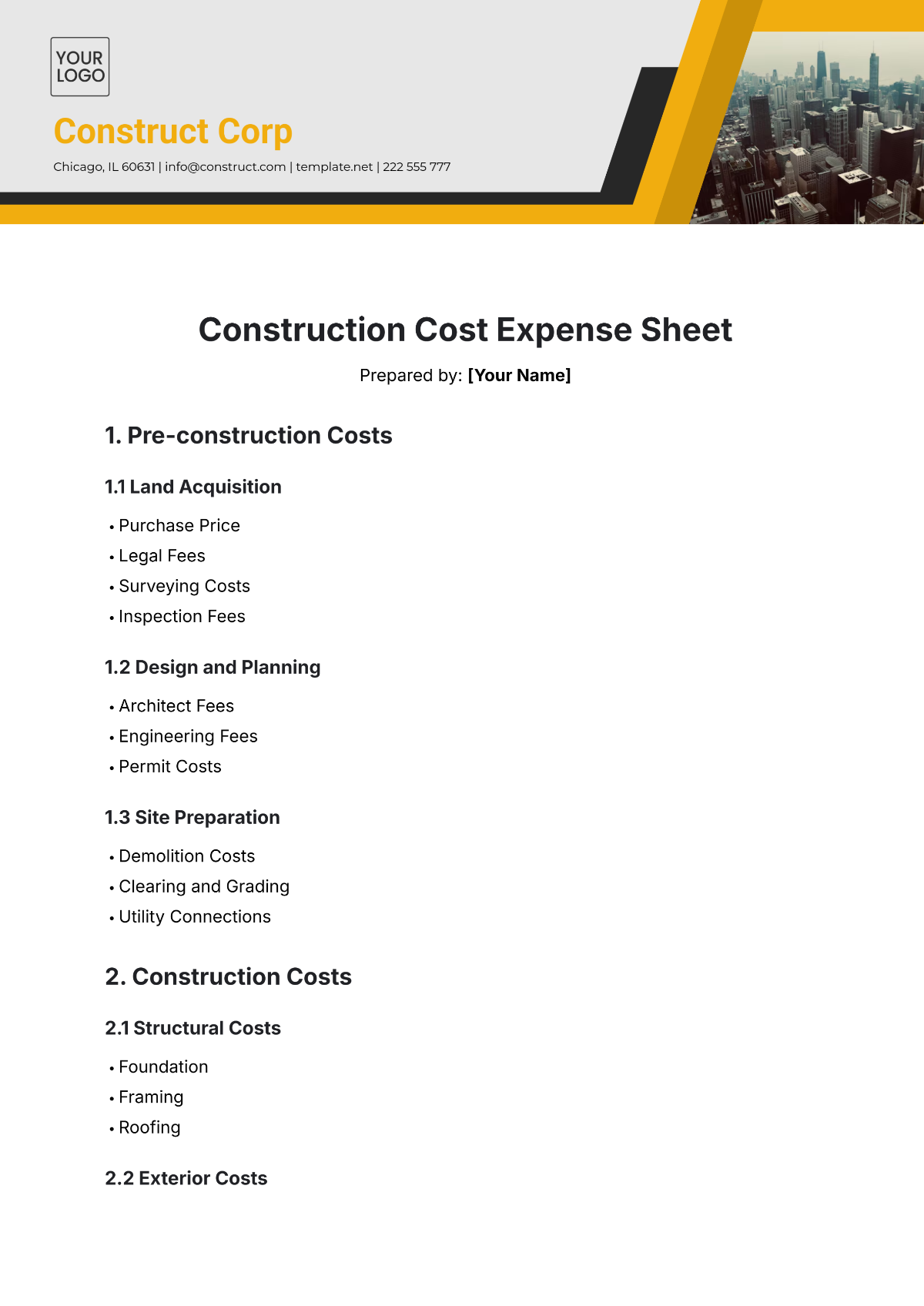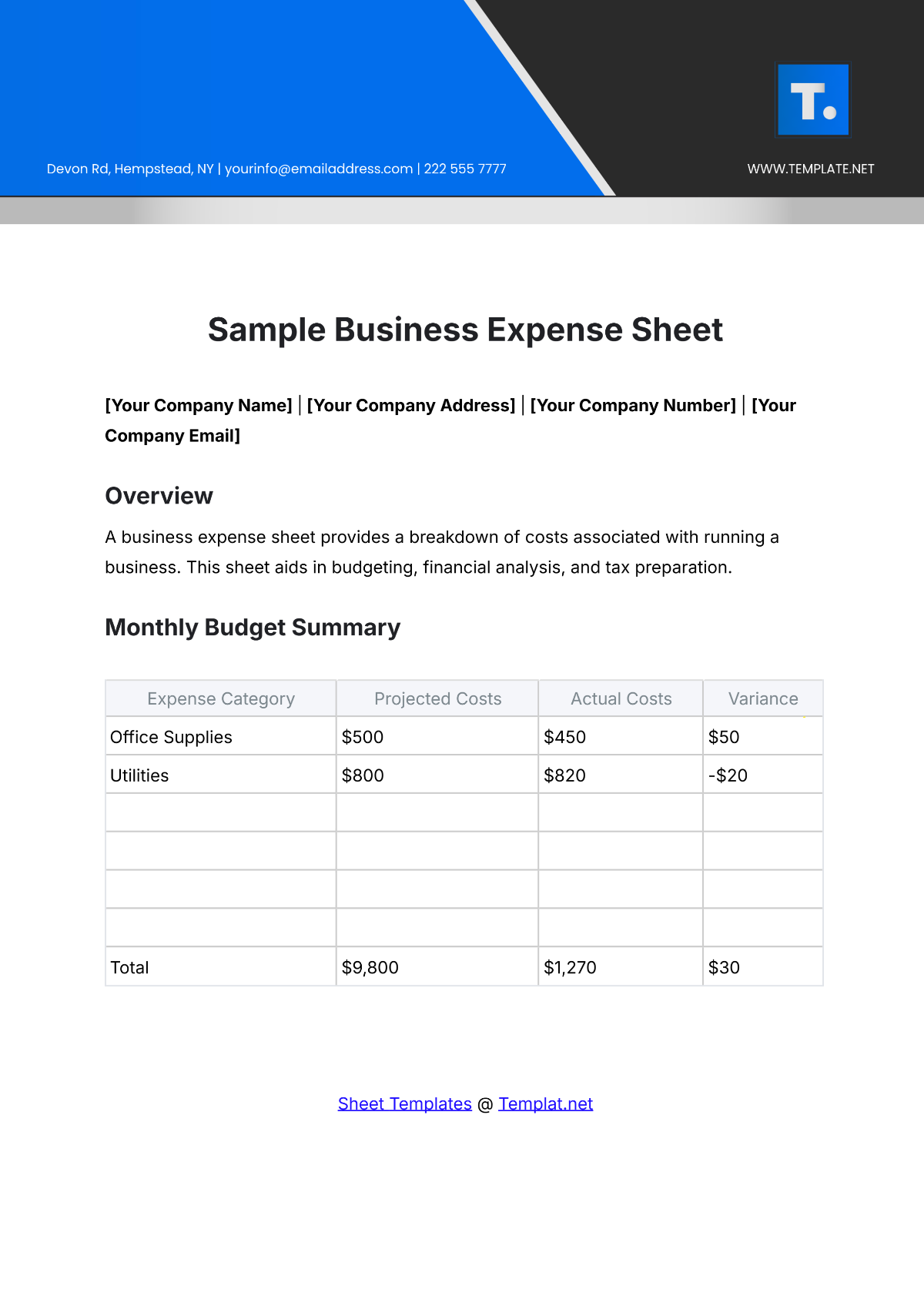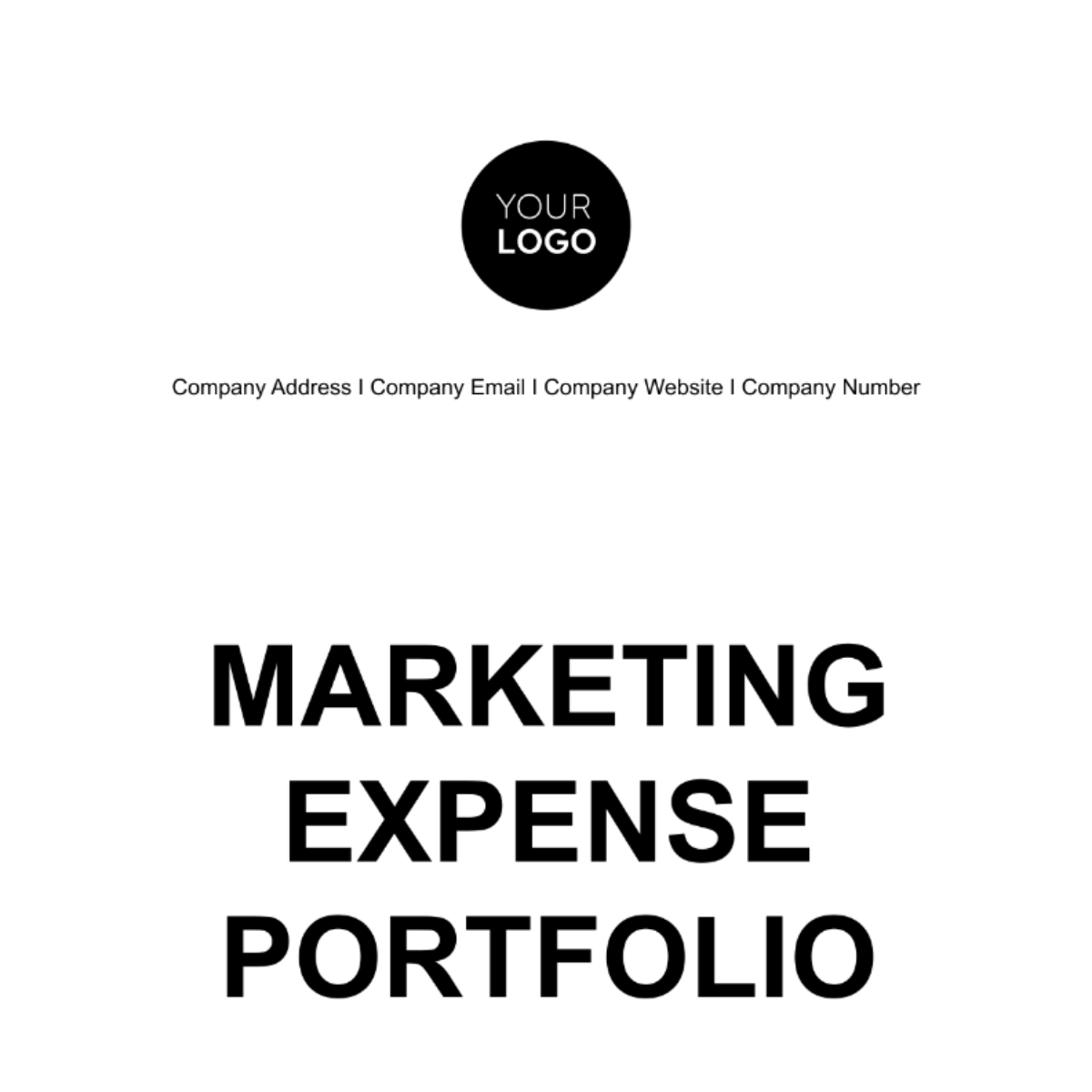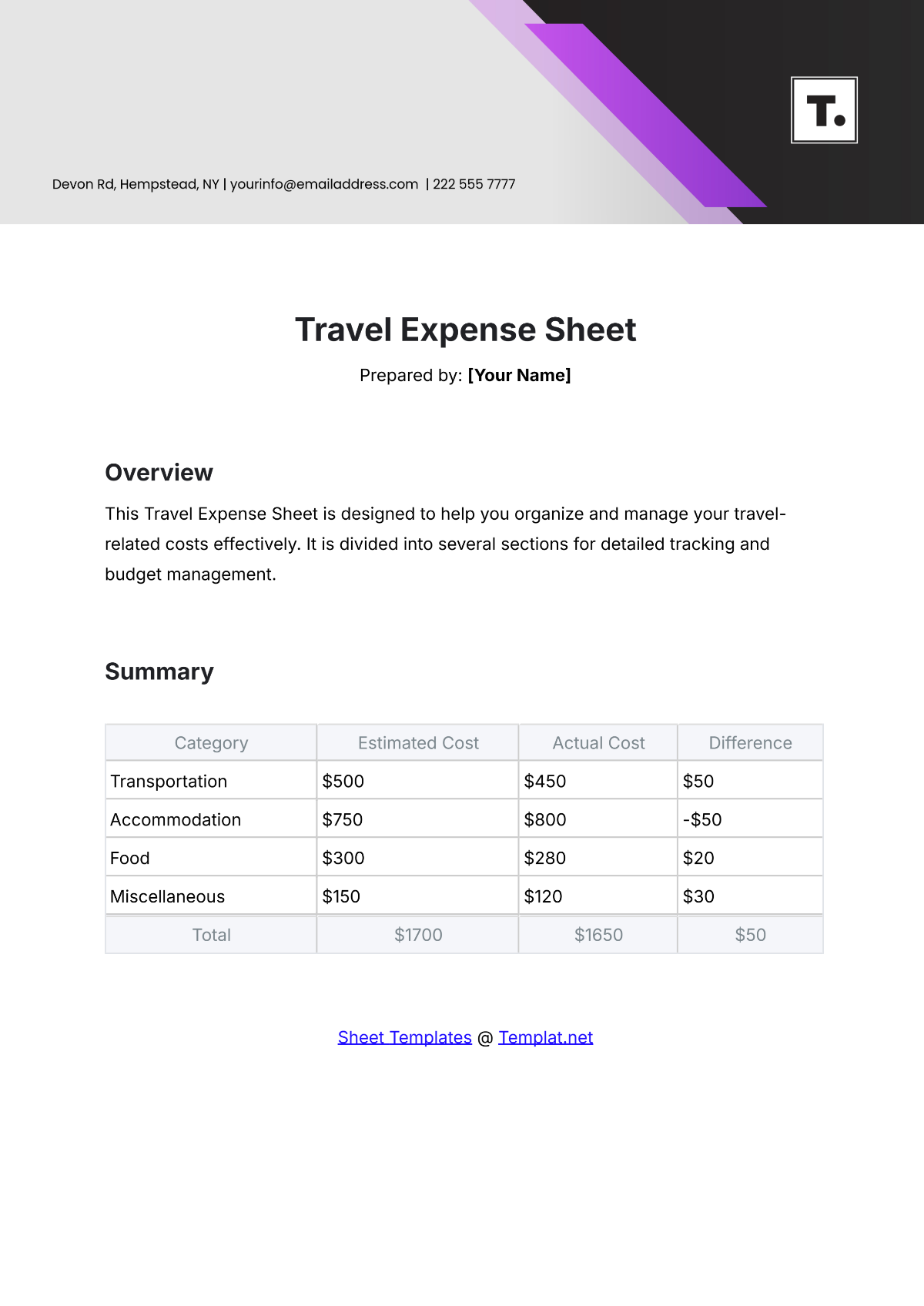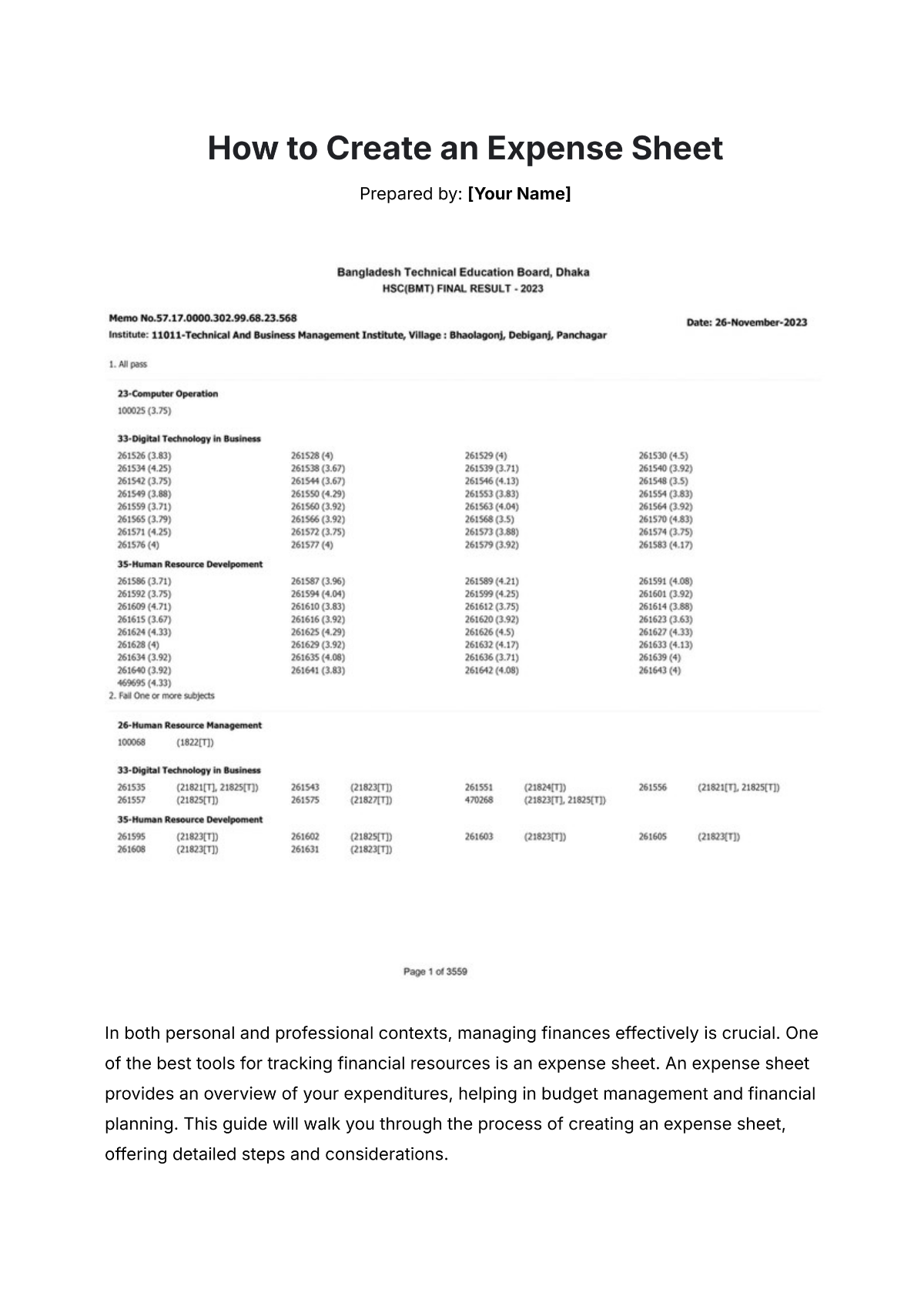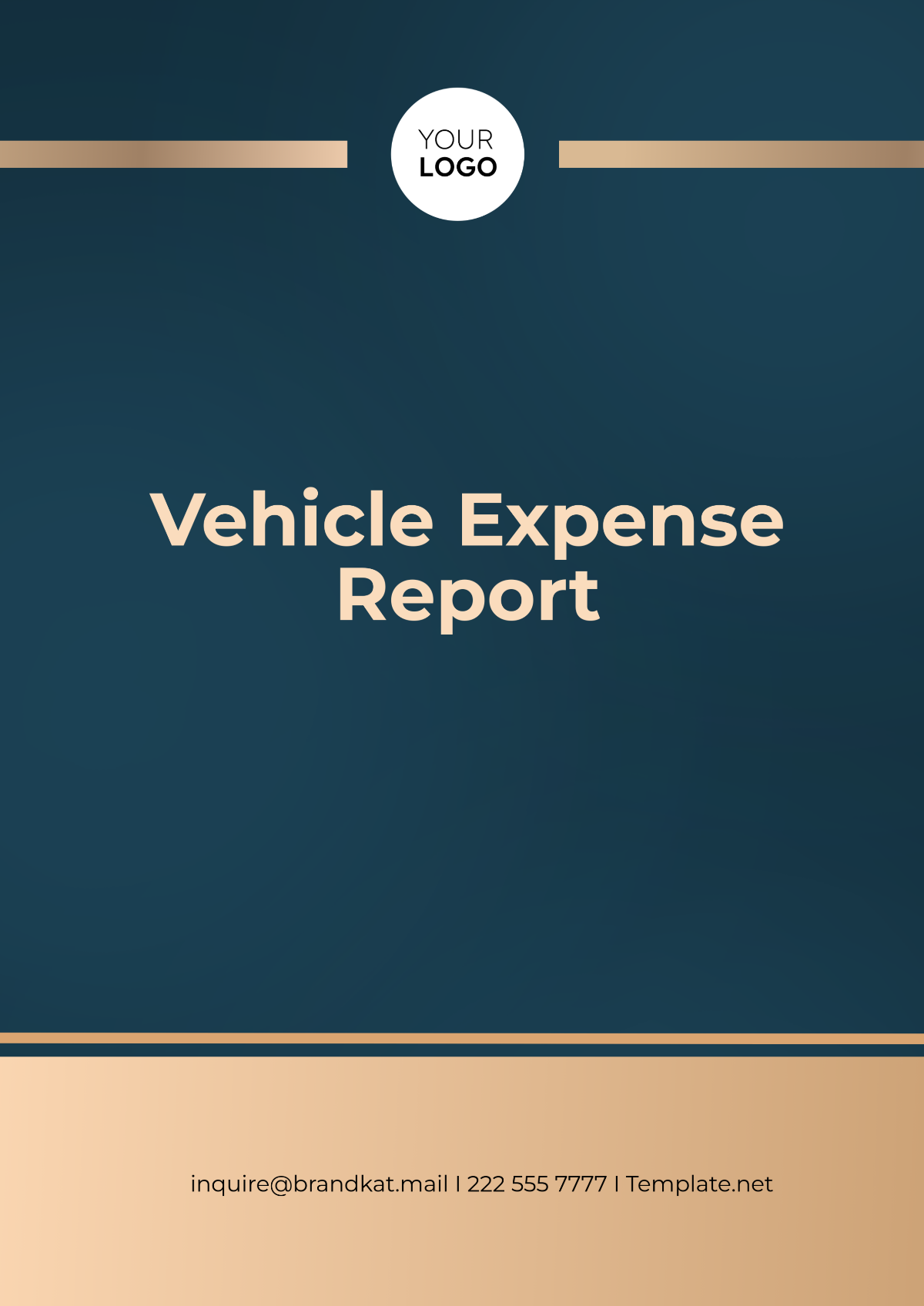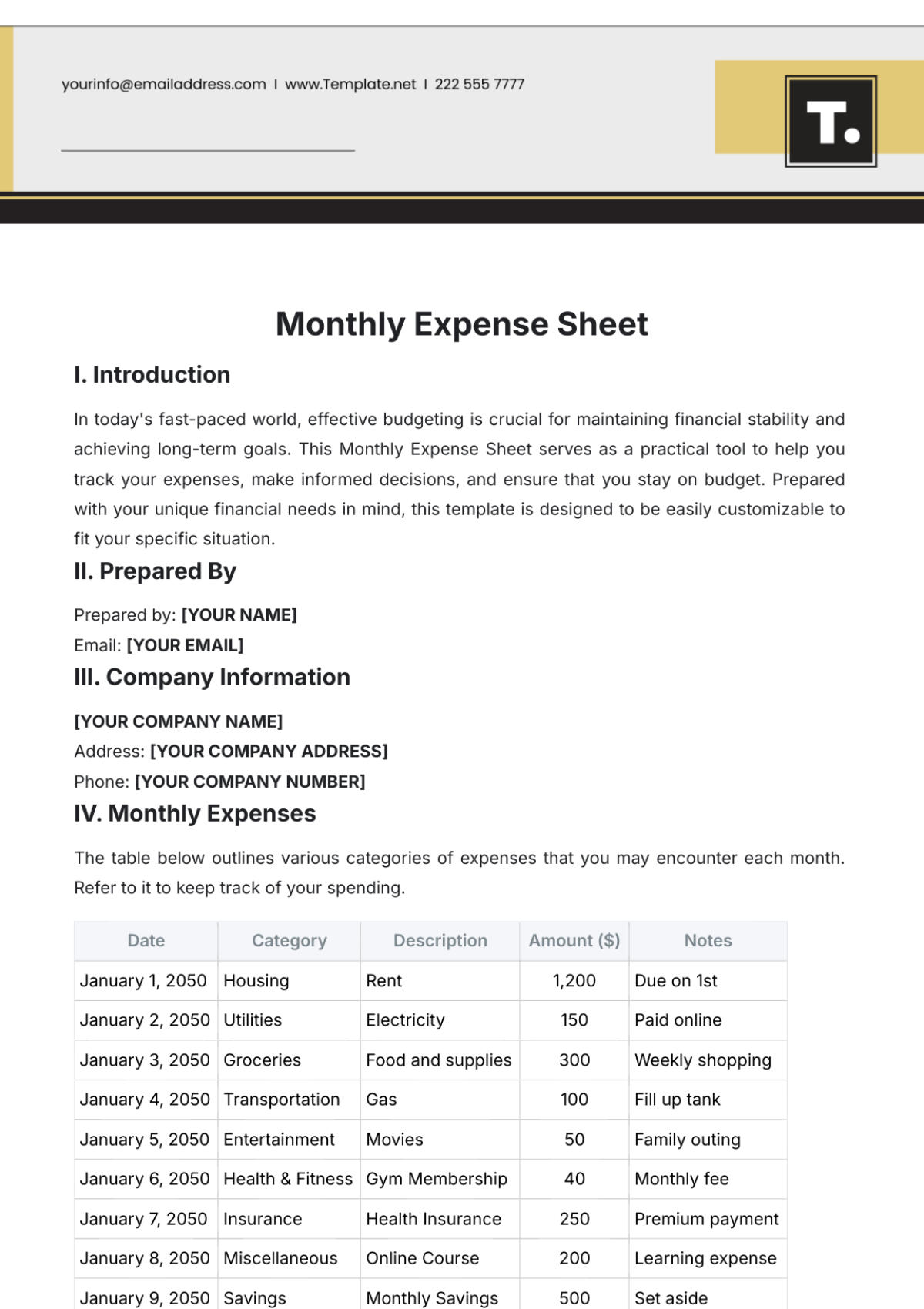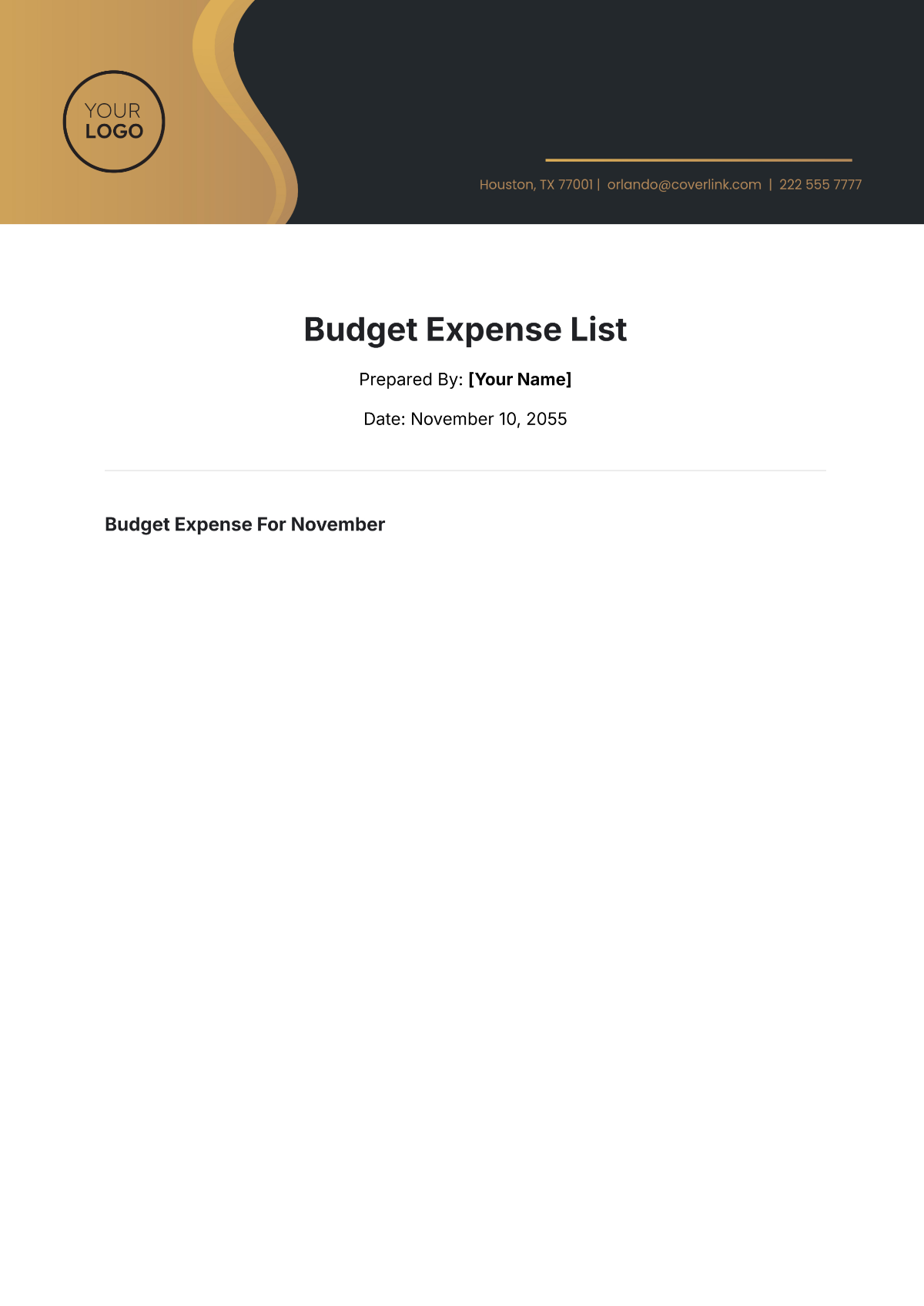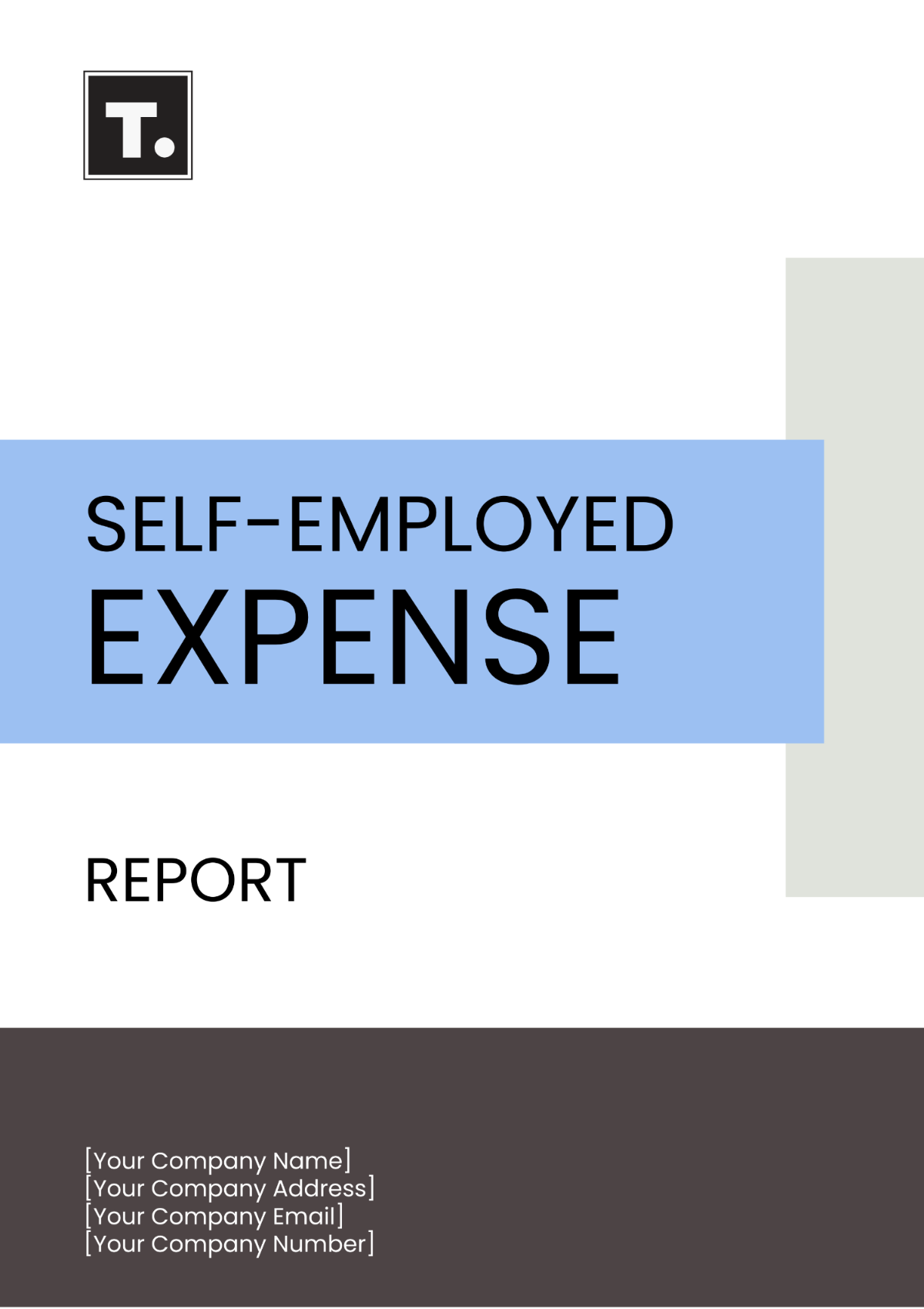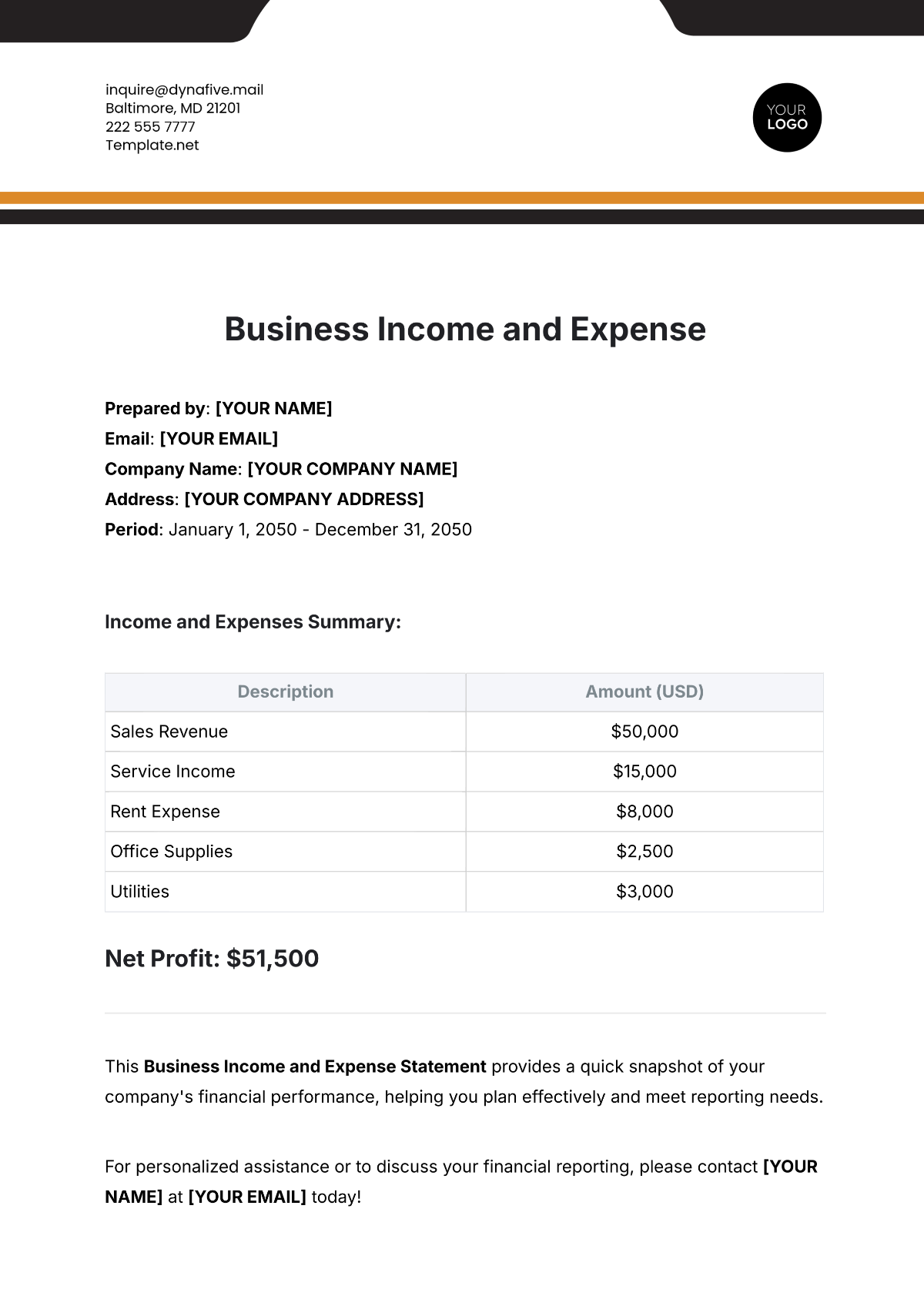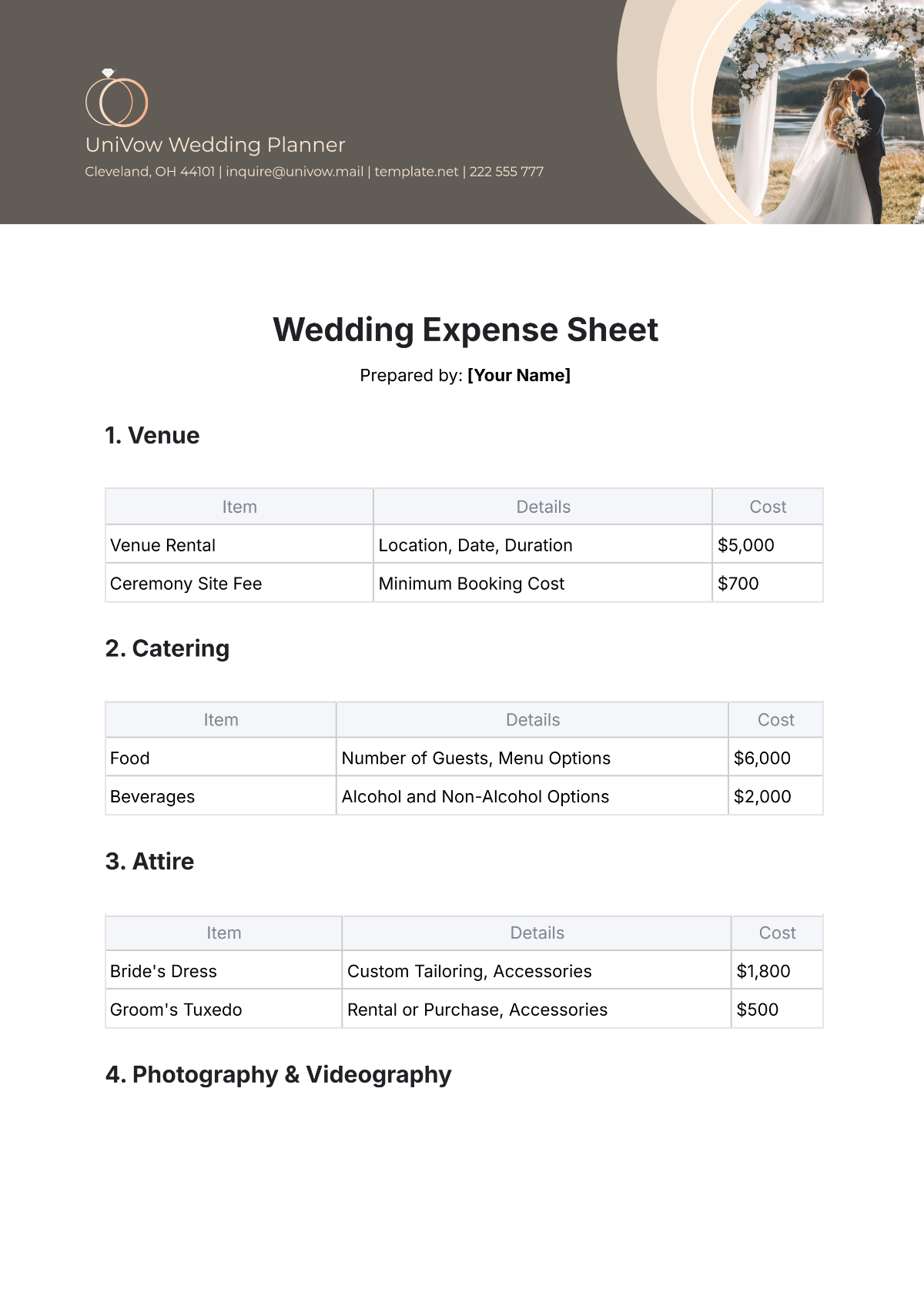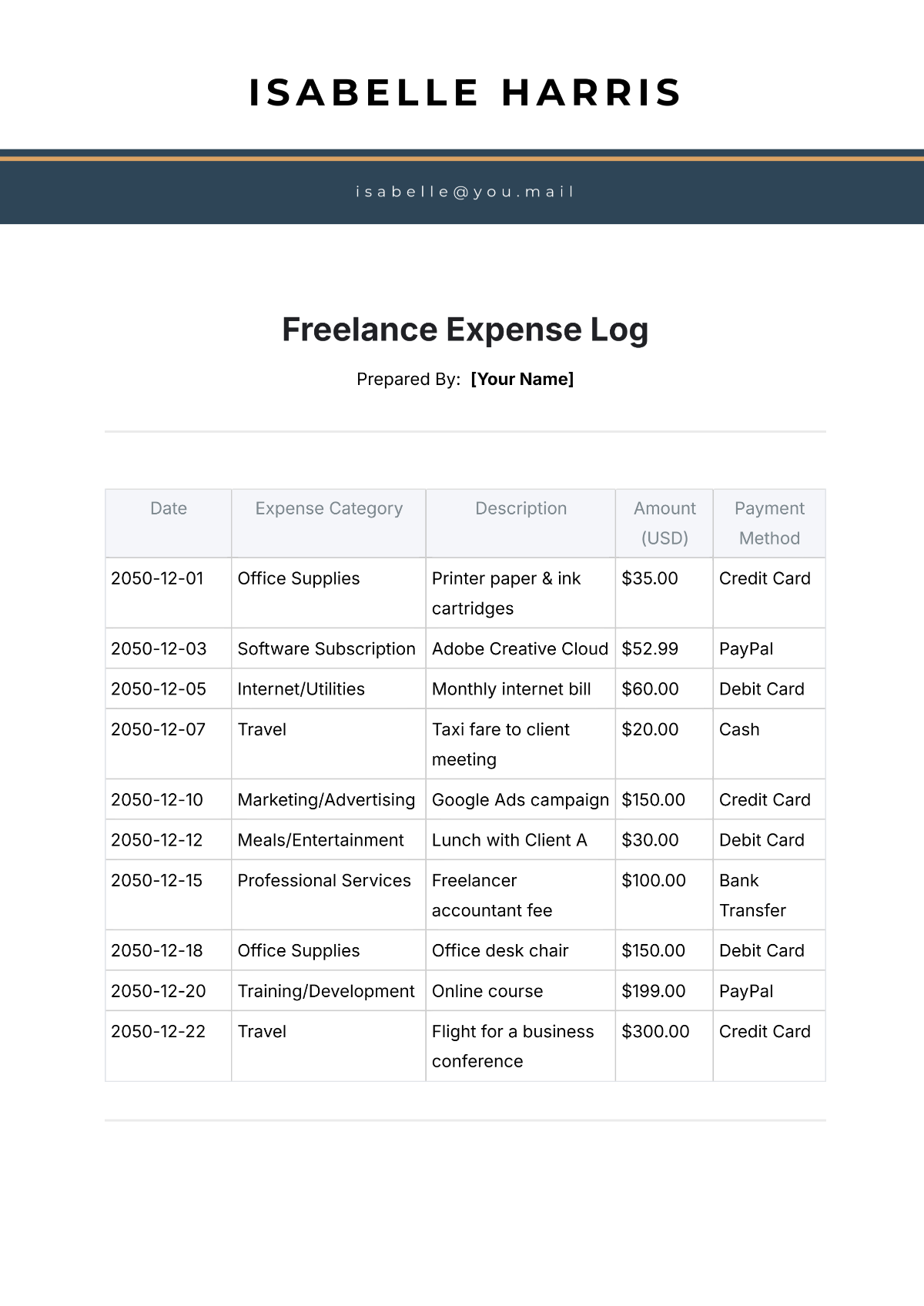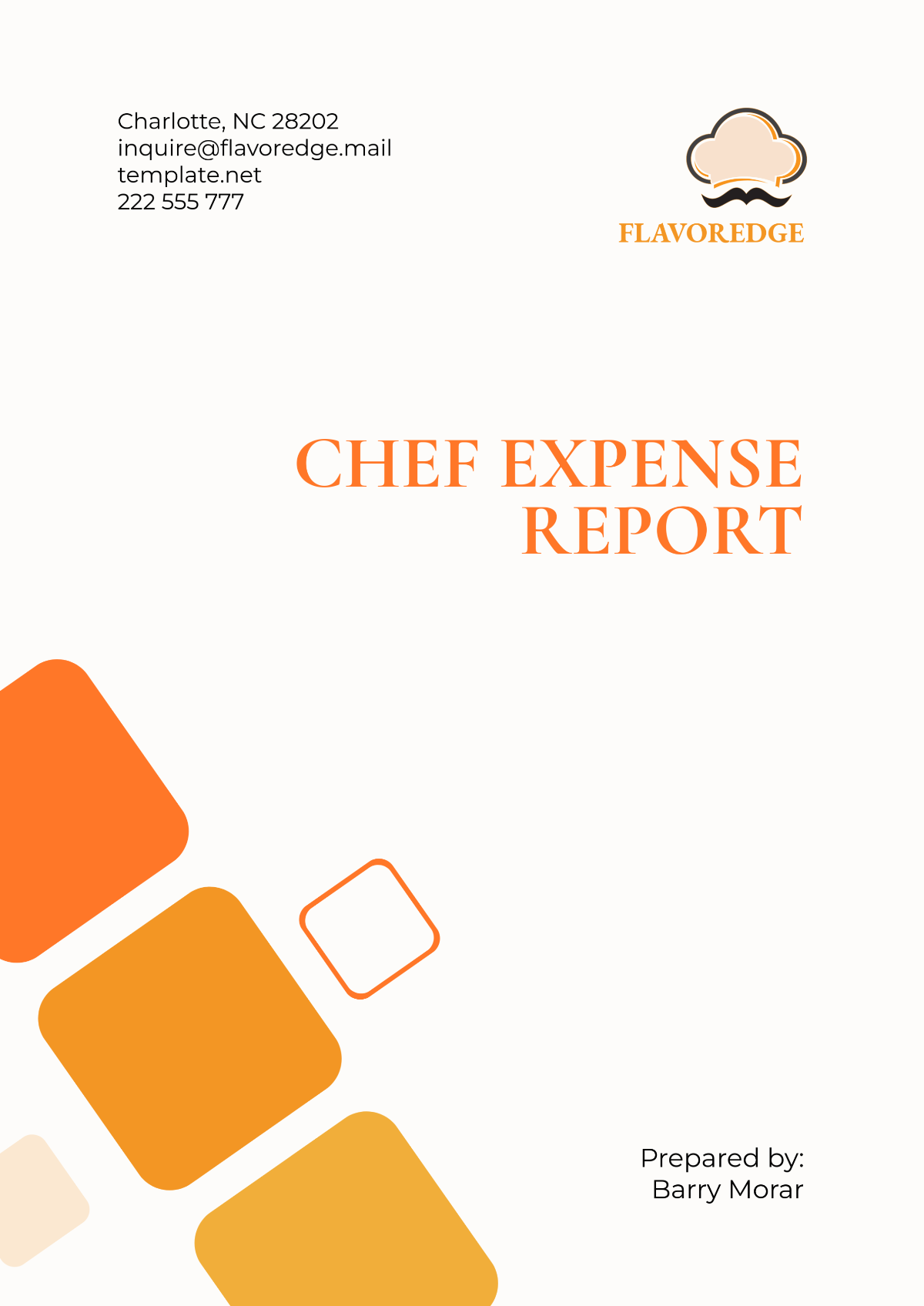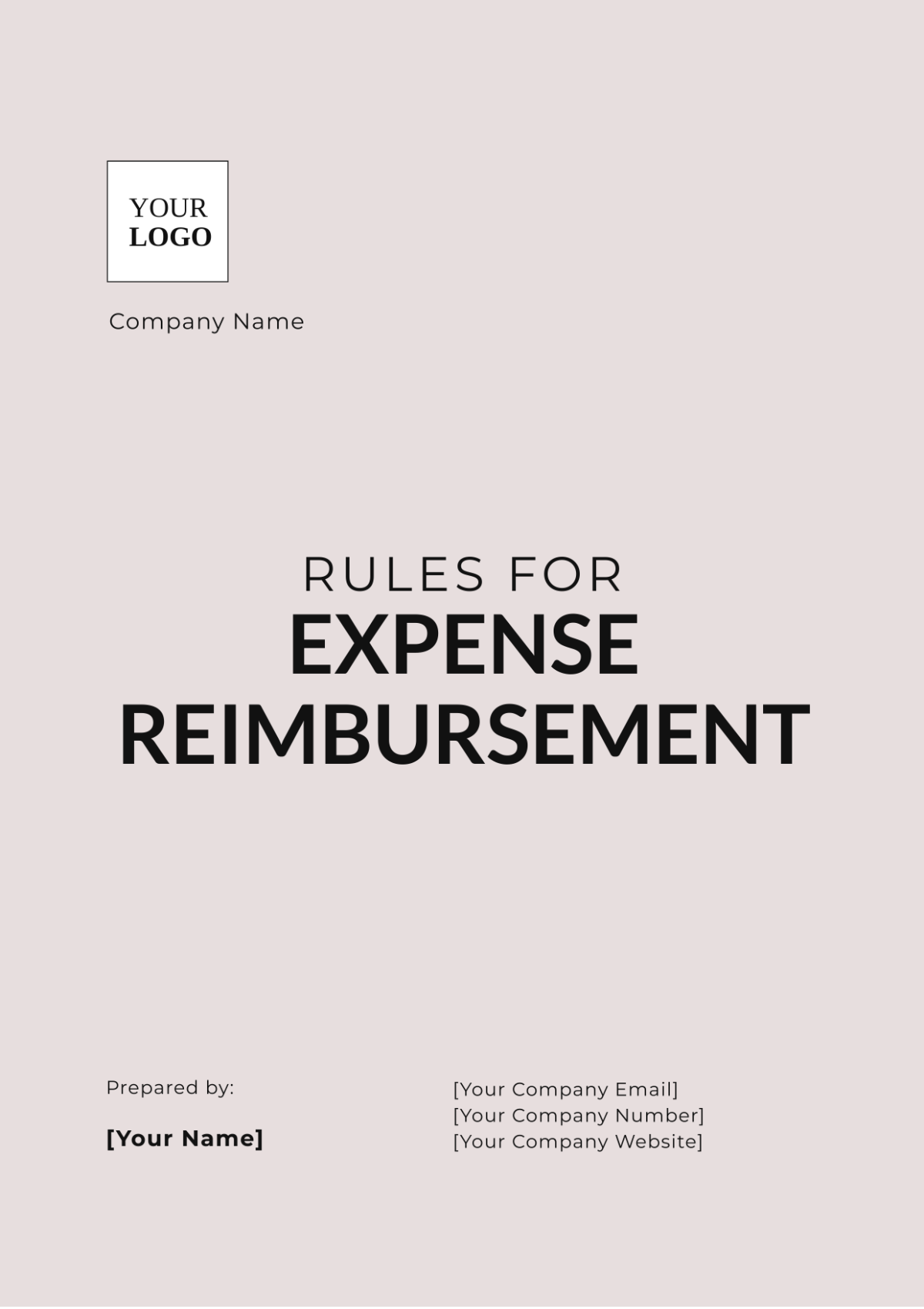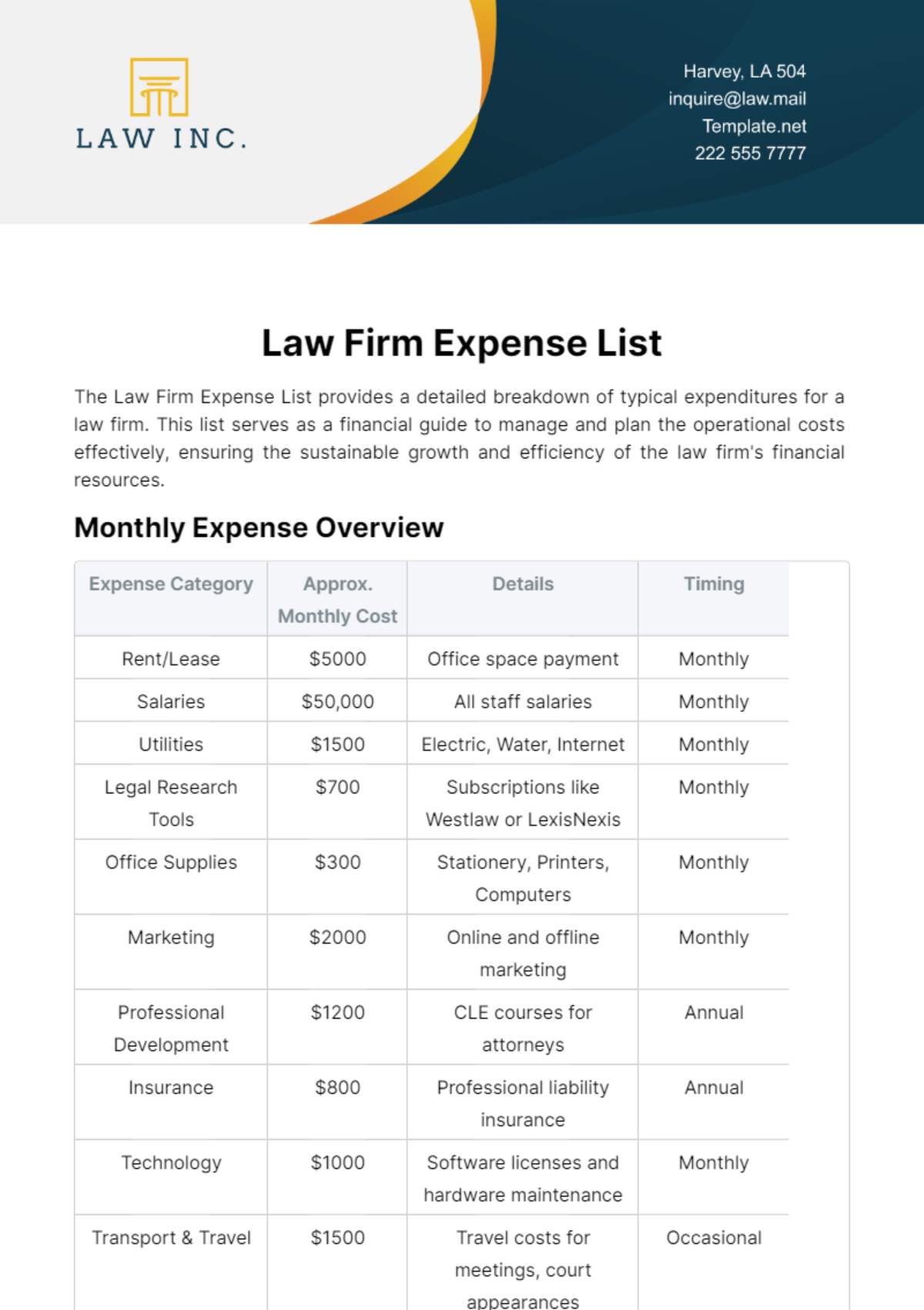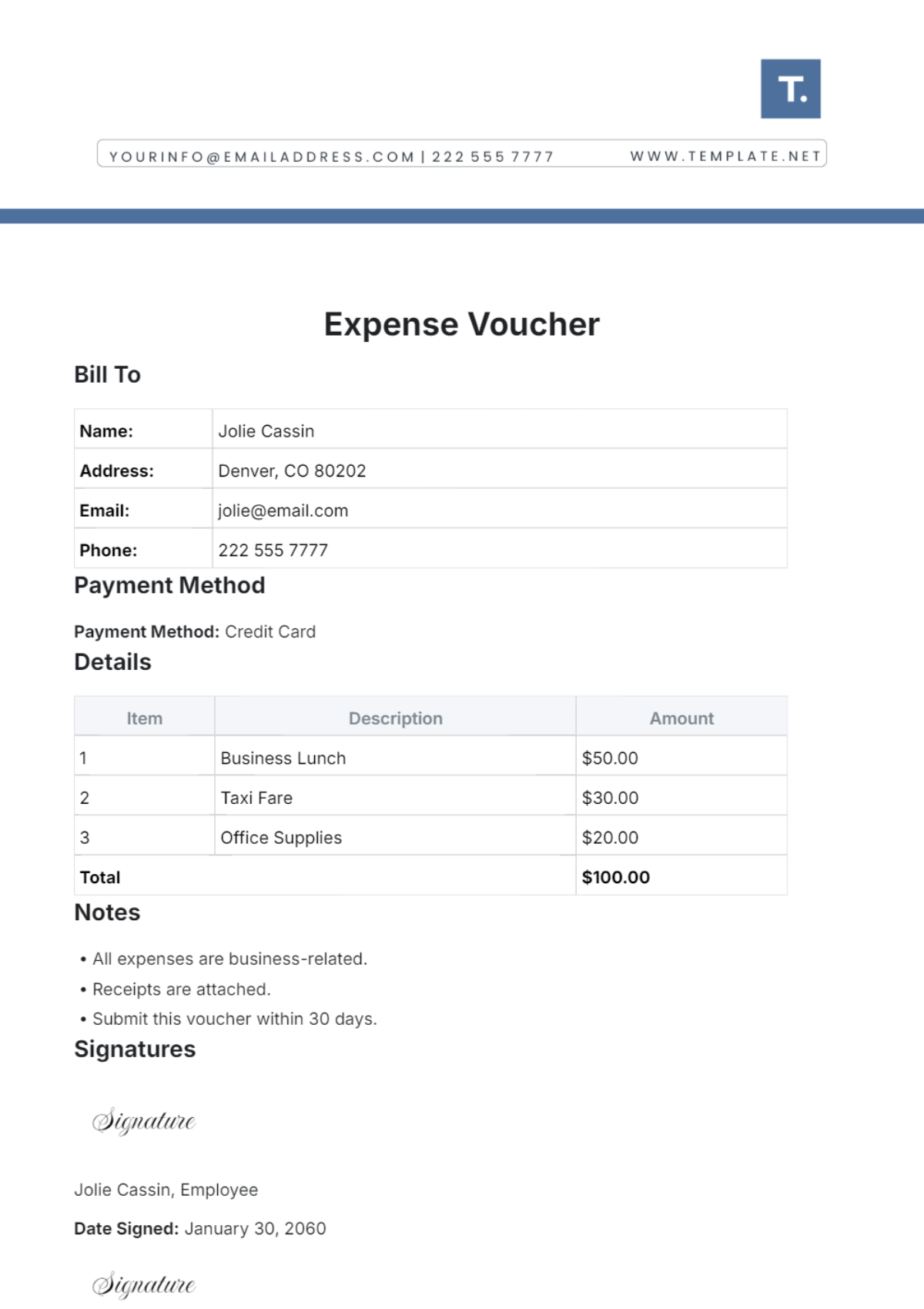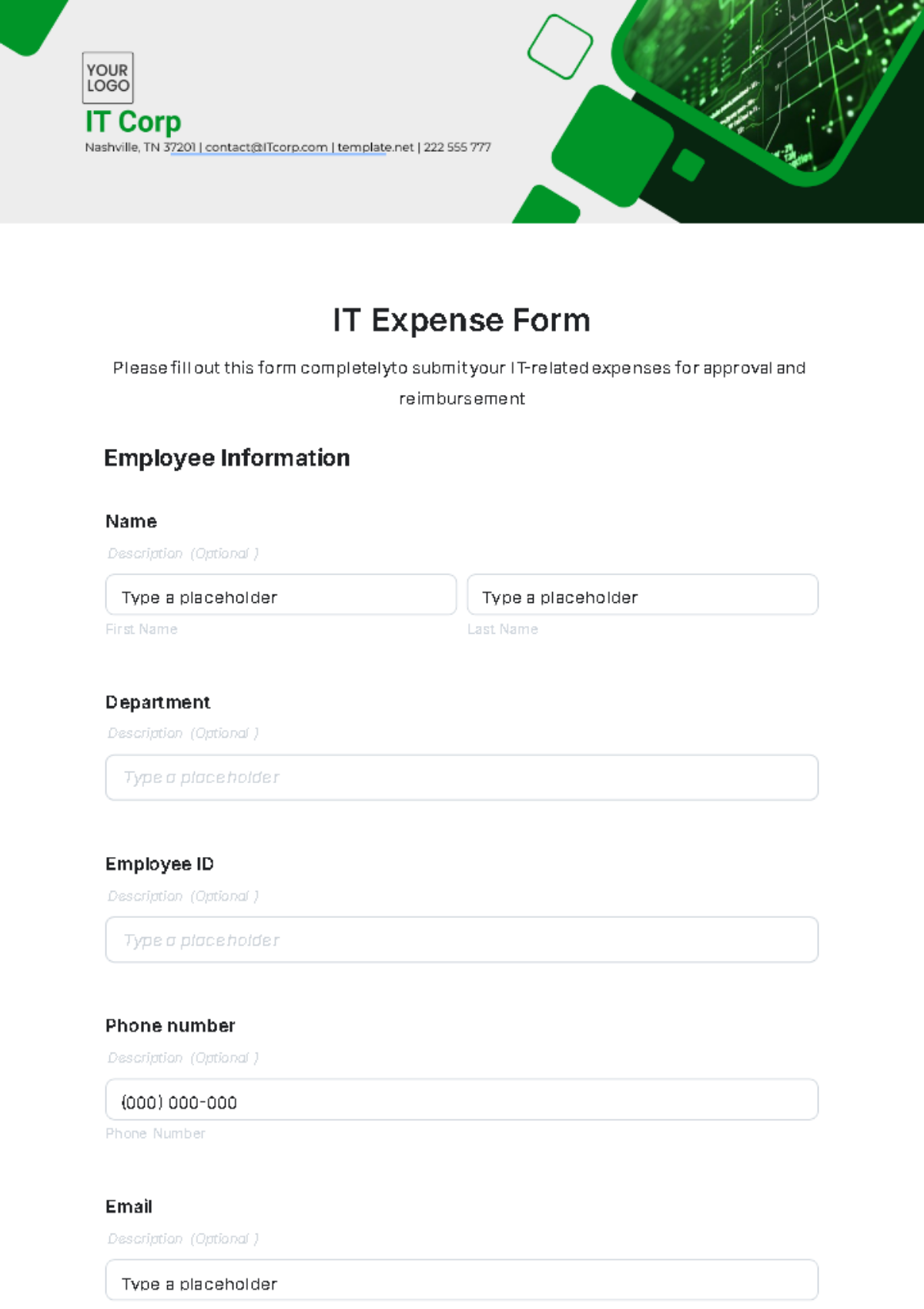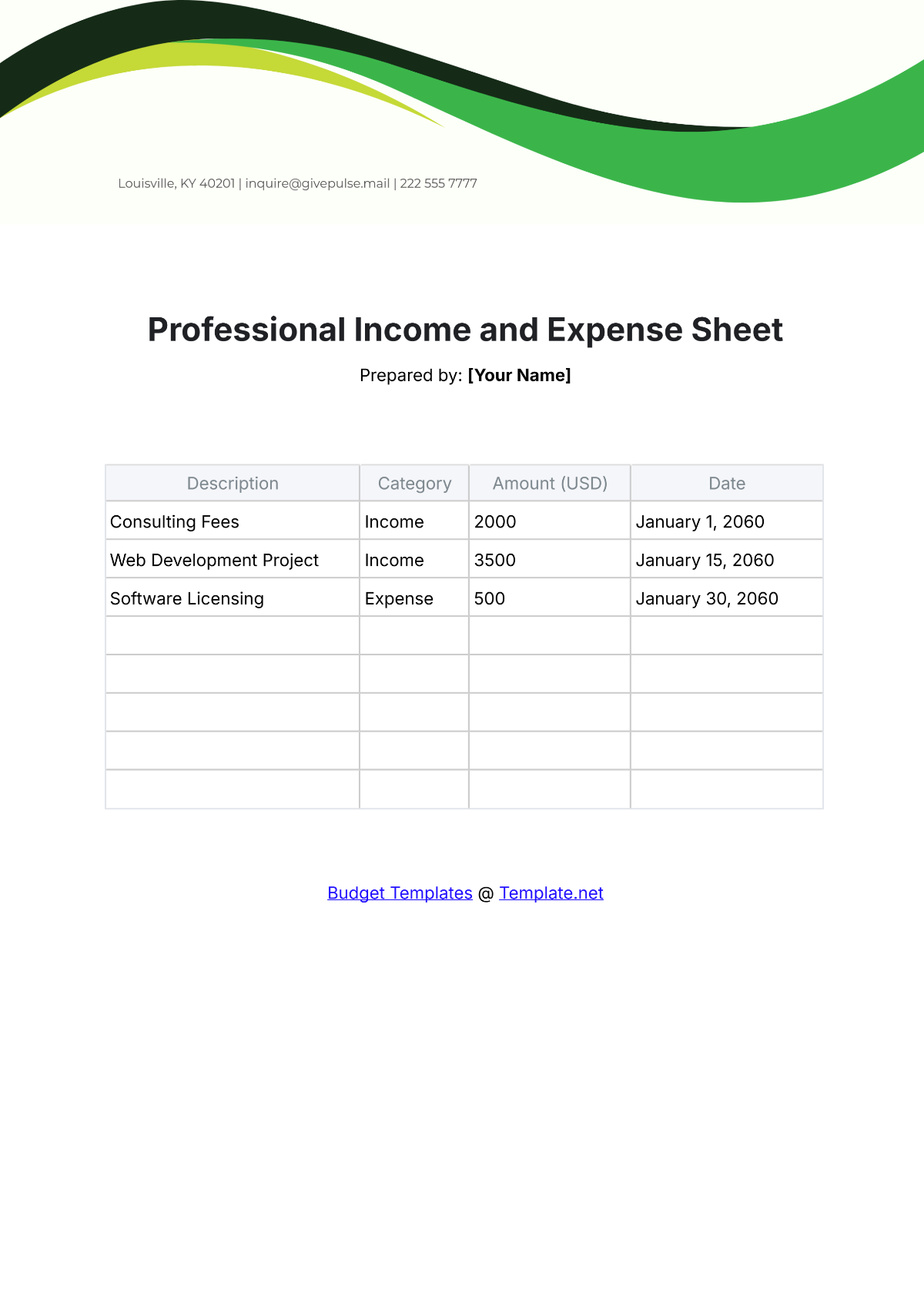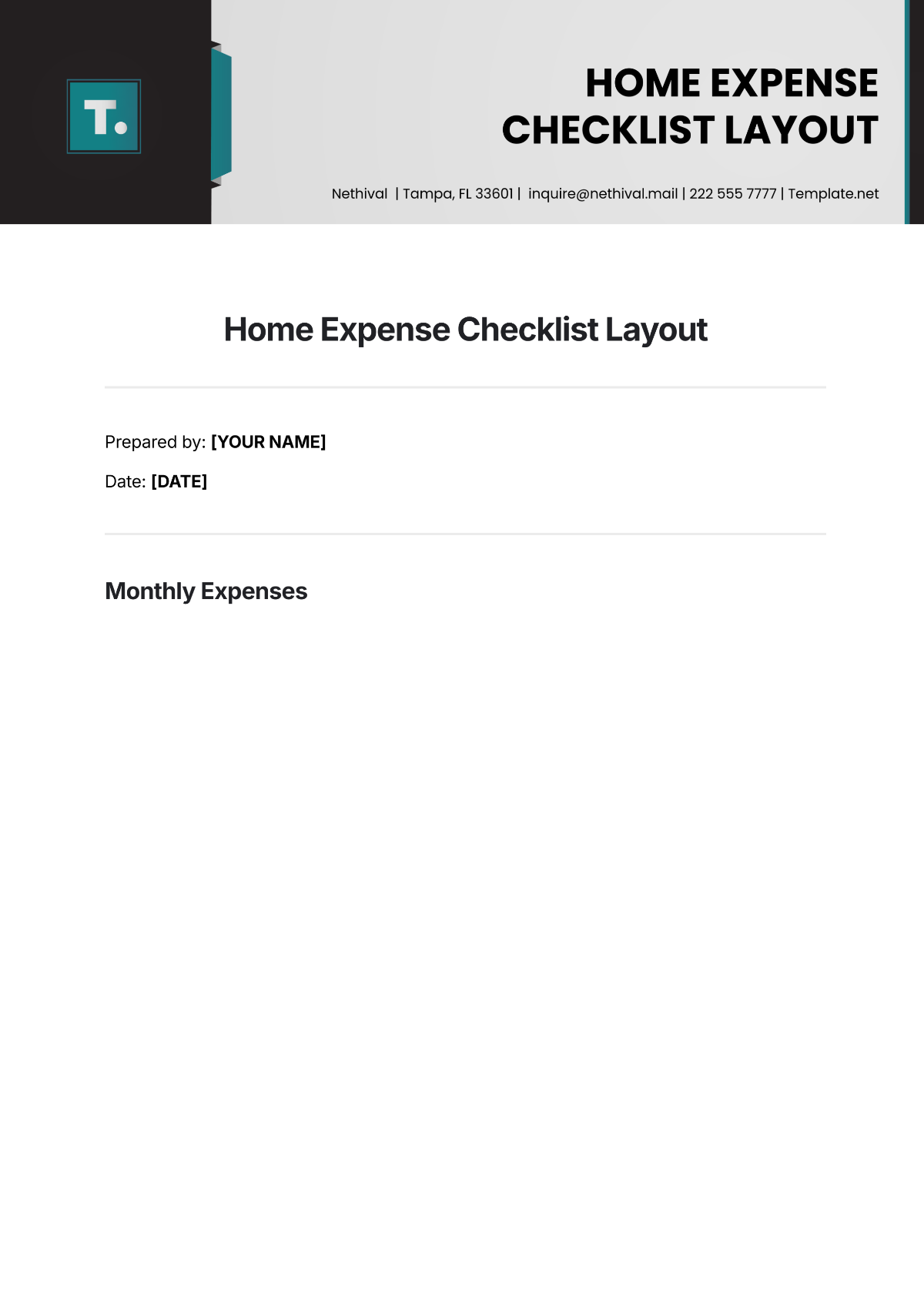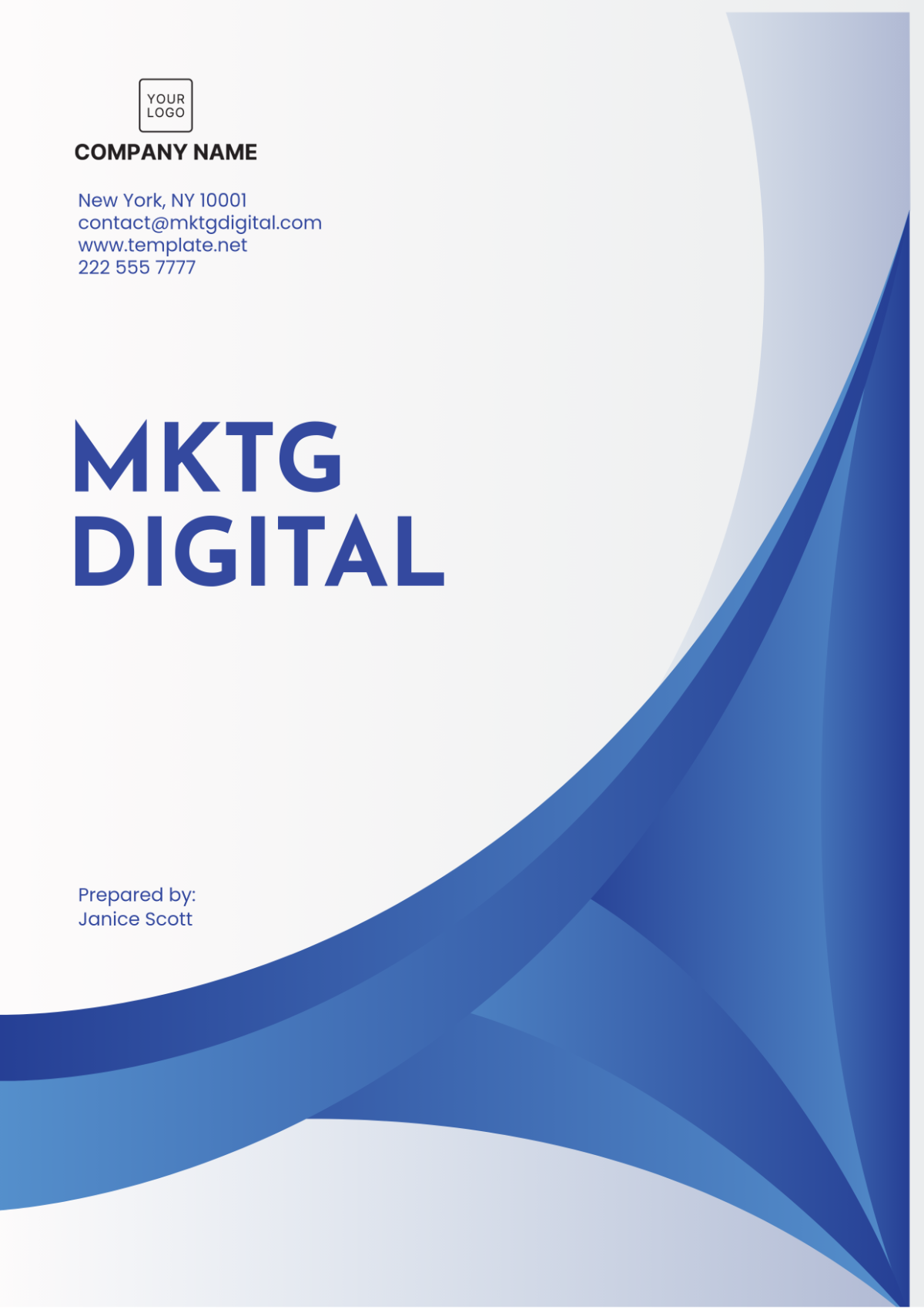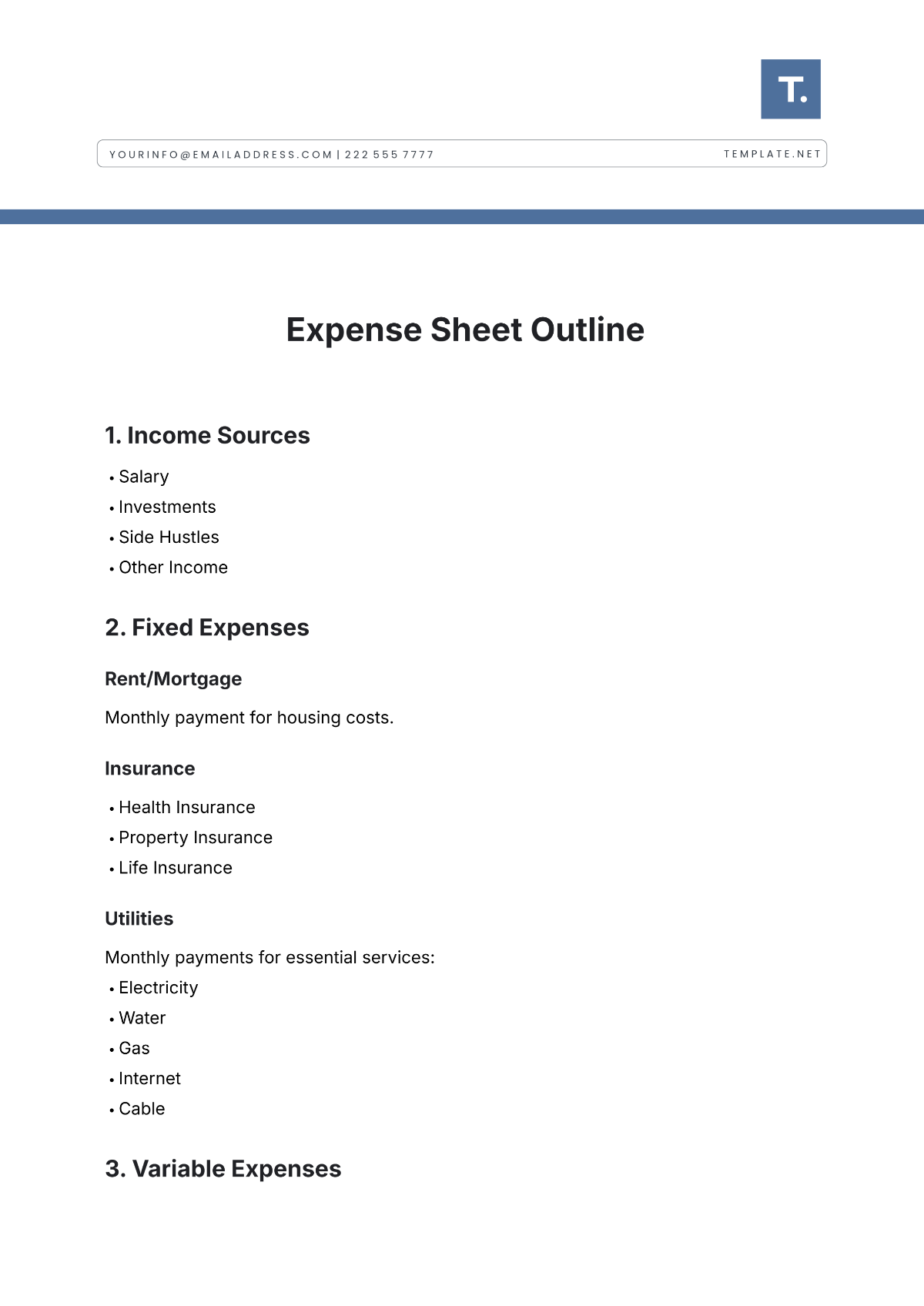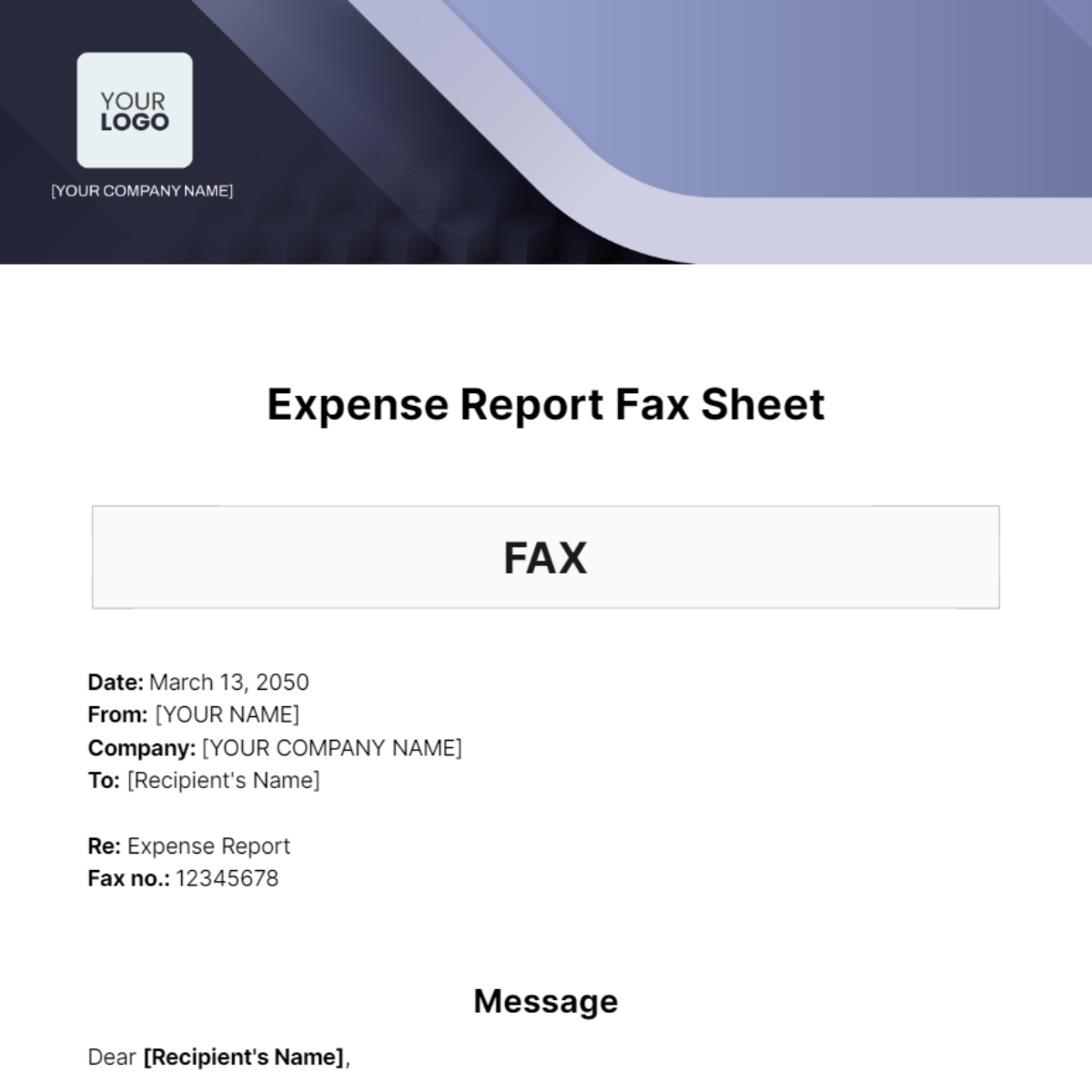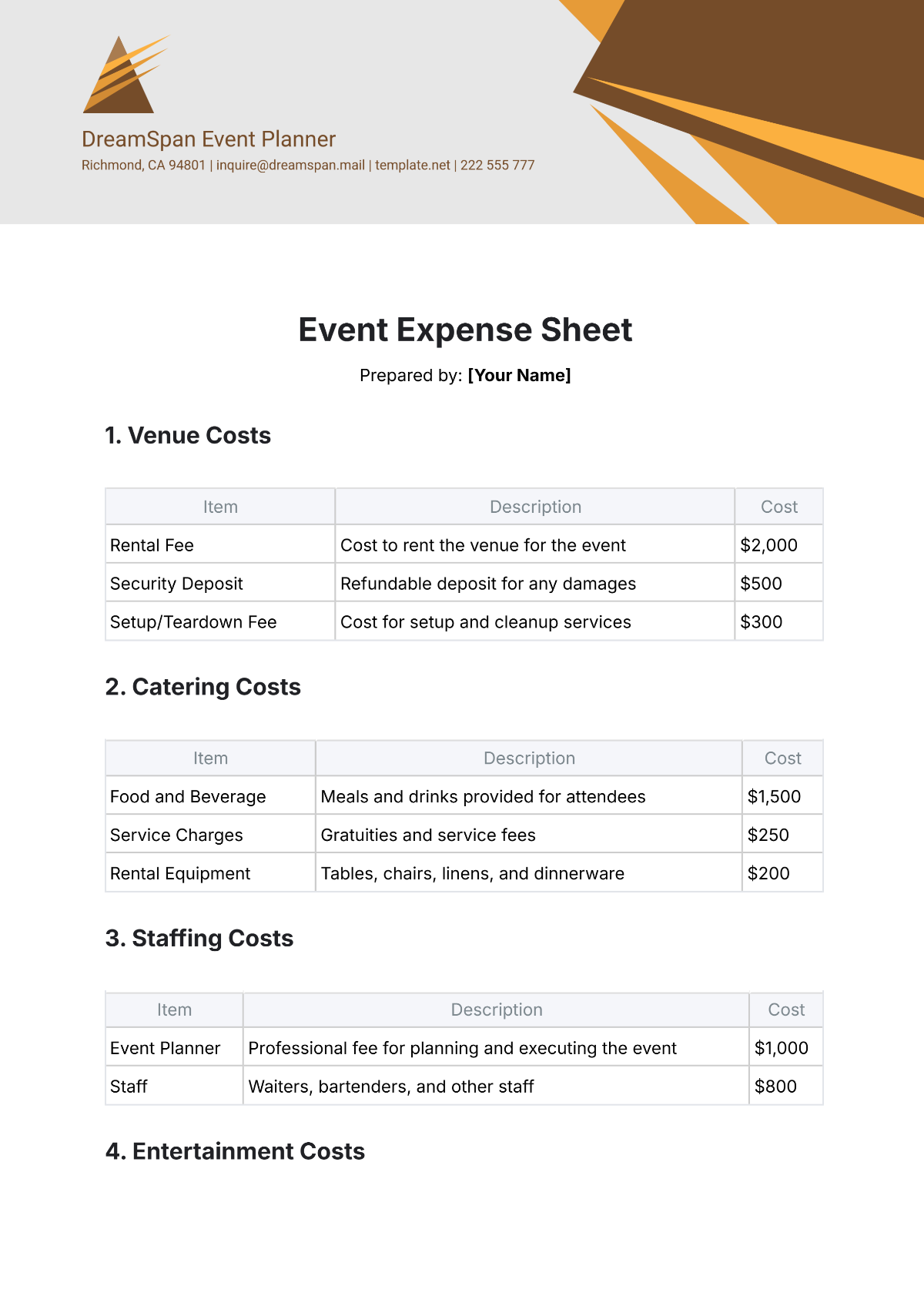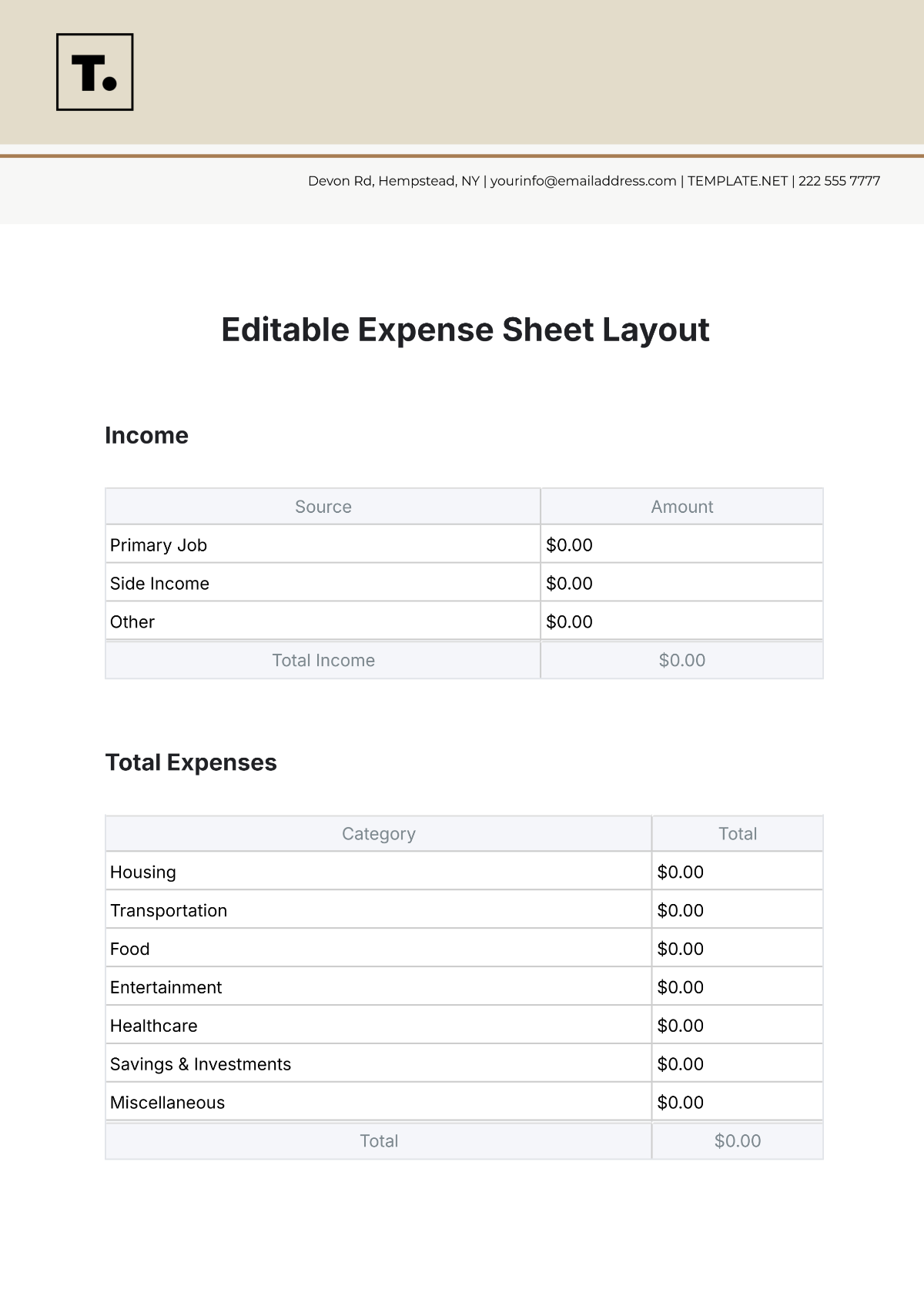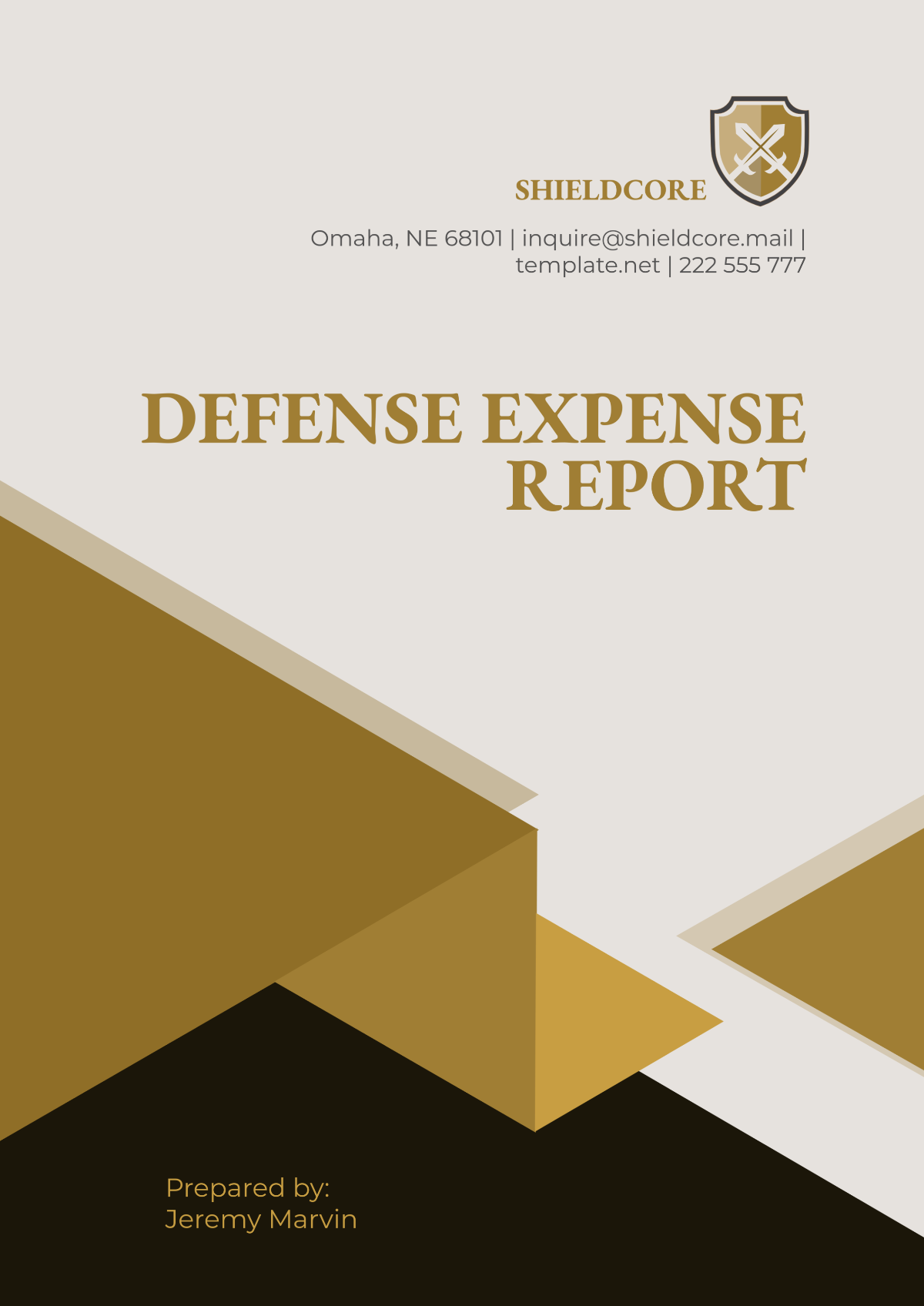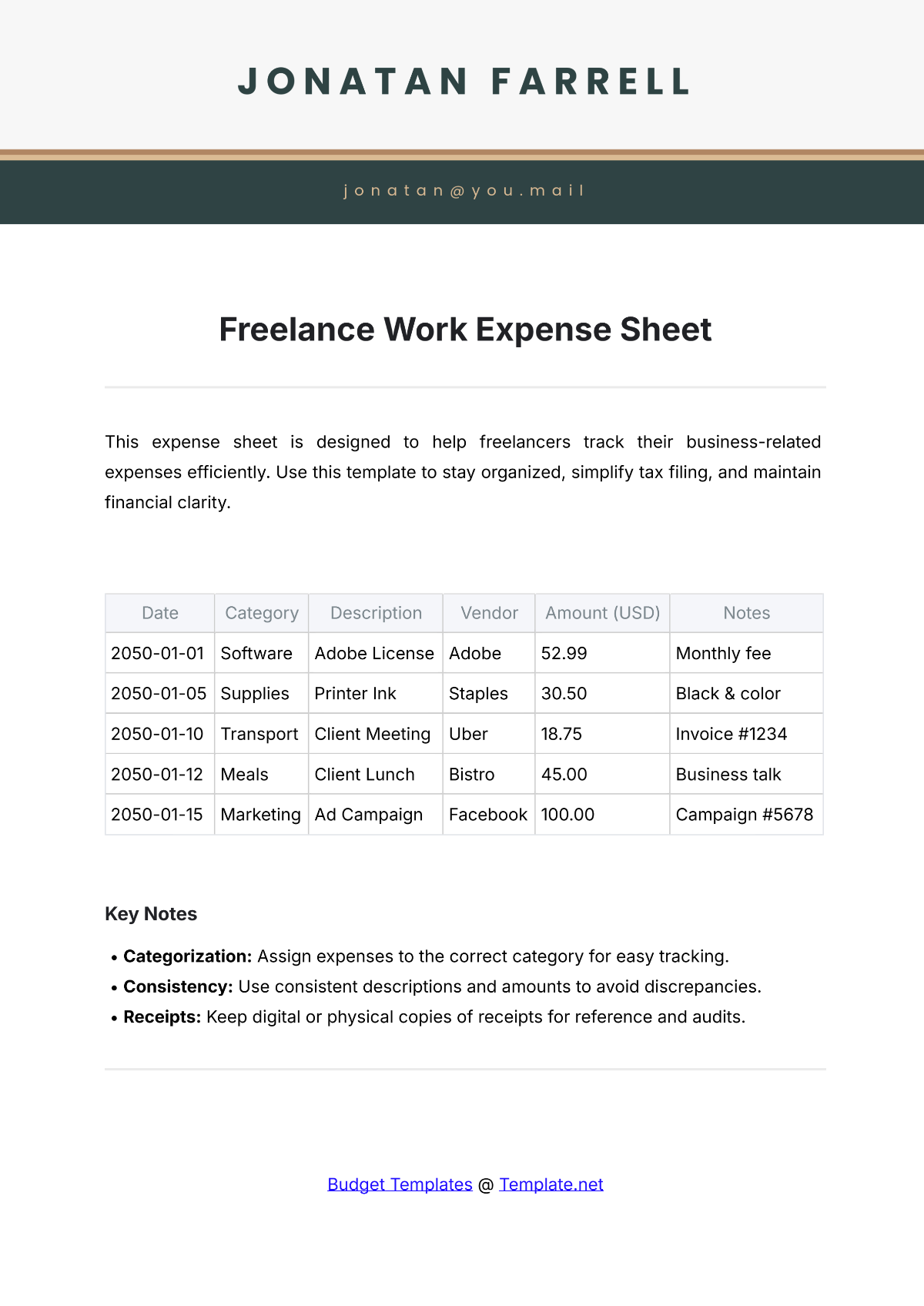Project Expense Report
Prepared by: [Your Name]
Company: [Your Company Name]
I. Executive Summary
The purpose of this report is to provide an overview of all expenses incurred for the project UrbanEco Initiative from January 1, 2050 to December 31, 2050. This document is intended to offer a detailed breakdown of expenditures to ensure transparency and accountability.
II. Project Details
A. Background
The UrbanEco Initiative (UEI) addresses urgent sustainability needs in the Greater Metroplex, where rapid population growth strains infrastructure and resources. Stakeholders from government, academia, nonprofits, and private sectors unite to tackle urbanization challenges like traffic congestion, pollution, and housing disparities.
B. Objectives
Sustainable Infrastructure: Implement green practices, expand public transport, and integrate renewable energy for resilient urban systems.
Smart City Integration: Utilize technology to create an interconnected urban ecosystem, enhancing service efficiency and public safety.
Community Engagement: Involve locals in sustainable projects through workshops and decision-making processes, ensuring initiatives align with community needs.
C. Expected Outcomes
Improved Environment: Promote eco-friendly practices to enhance air and water quality and preserve natural habitats.
Urban Resilience: Strengthen infrastructure to withstand environmental hazards and recover effectively.
Technological Innovation: Drive innovation in renewable energy, transportation, and digital governance.
Social Inclusion: Address disparities in access to services and green spaces, fostering resilient, inclusive communities.
III. Expense Categories
Expenses are systematically categorized and allocated into the following specific and distinct groups:
Salaries and Wages: This category includes payments made to employees and contractors for their work on the project, covering salaries, wages, and associated benefits.
Materials and Supplies: Expenses associated with the acquisition of materials, office supplies, and additional consumable items that are essential for the successful implementation of the project.
Equipment: Costs associated with the acquisition or rental of equipment required for project activities, such as machinery, tools, or technology devices.
Travel and Lodging: Expenses that have been incurred for travel, accommodation, and other associated costs related to trips, meetings, or events that are connected with the project.
Miscellaneous: Any additional expenses that are not included in the previously mentioned categories, for instance, fees related to consulting services, costs associated with training, or expenditures that were not anticipated.
IV. Expense Summary
The table below summarizes the total expenses for each category. Detailed line-item expenses are provided in the following sections.
Category | Total Amount |
|---|---|
Salaries and Wages | $50,000.00 |
Materials and Supplies | $20,000.00 |
Equipment | $15,000.00 |
Travel and Lodging | $10,000.00 |
Miscellaneous | $5,000.00 |
V. Detailed Expense Breakdown
This section includes detailed line-item expenses for each category, listing the date, description, and amount for each expense.
Date | Description | Category | Amount |
|---|---|---|---|
January 5, 2050 | Office Supplies | Materials and Supplies | $2,500.00 |
February 12, 2050 | Team Workshop | Travel and Lodging | $3,000.00 |
March 18, 2050 | Projector Purchase | Equipment | $1,500.00 |
V. Budget vs. Actual Expenditure
This section compares the budgeted amounts against the actual expenditures to highlight variances.
Category | Budgeted Amount | Actual Amount | Variance |
|---|---|---|---|
Salaries and Wages | $55,000.00 | $50,000.00 | $5,000.00 |
Materials and Supplies | $25,000.00 | $20,000.00 | $5,000.00 |
VII. Conclusion and Recommendations
In conclusion, the project UrbanEco Initiative has successfully tracked all expenses with precise categorization. The overall project expenditure was within the budgeted limits, demonstrating effective financial management. It is recommended that the team continues using this structured reporting approach for future projects to maintain transparency and accountability.
